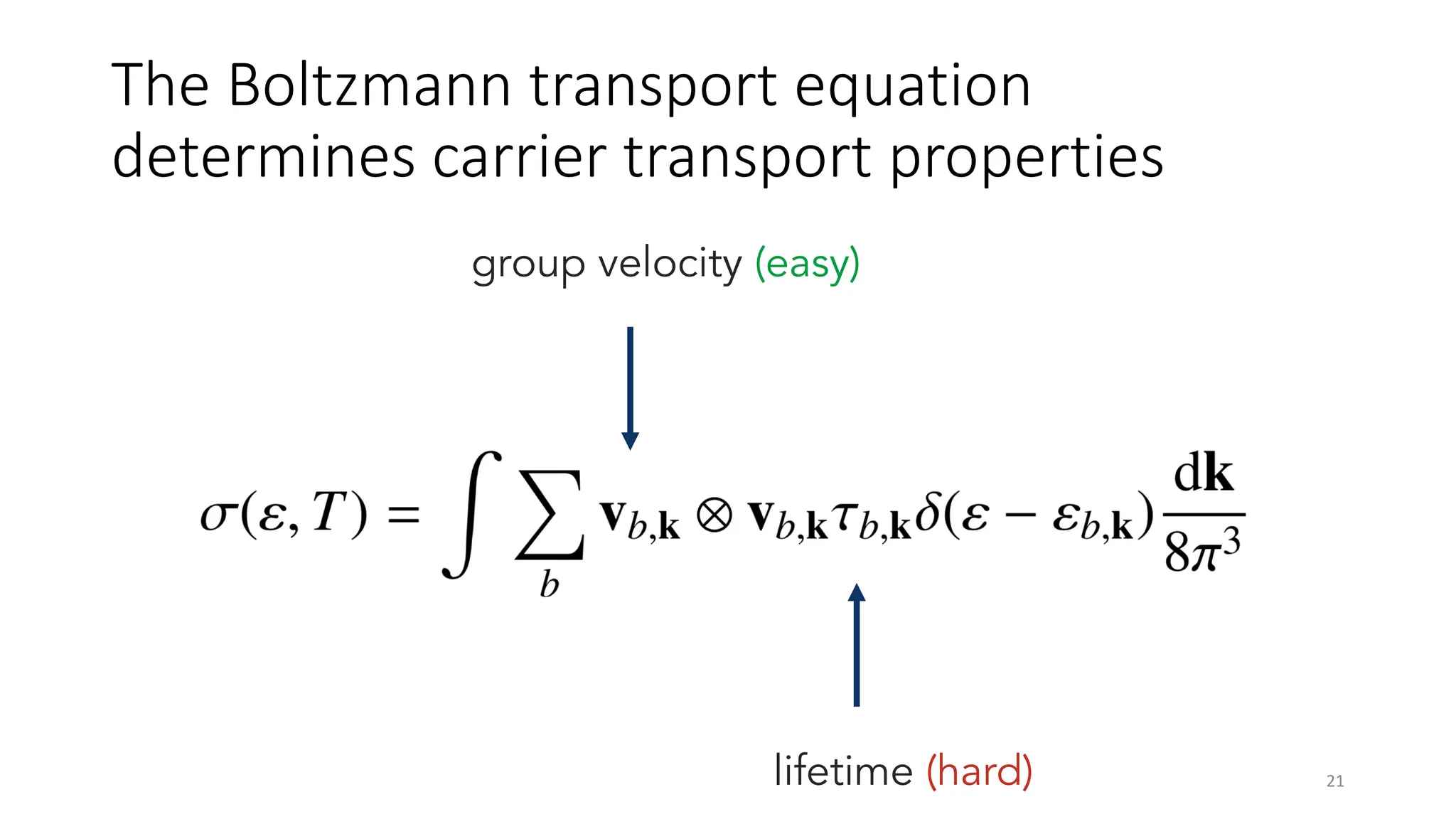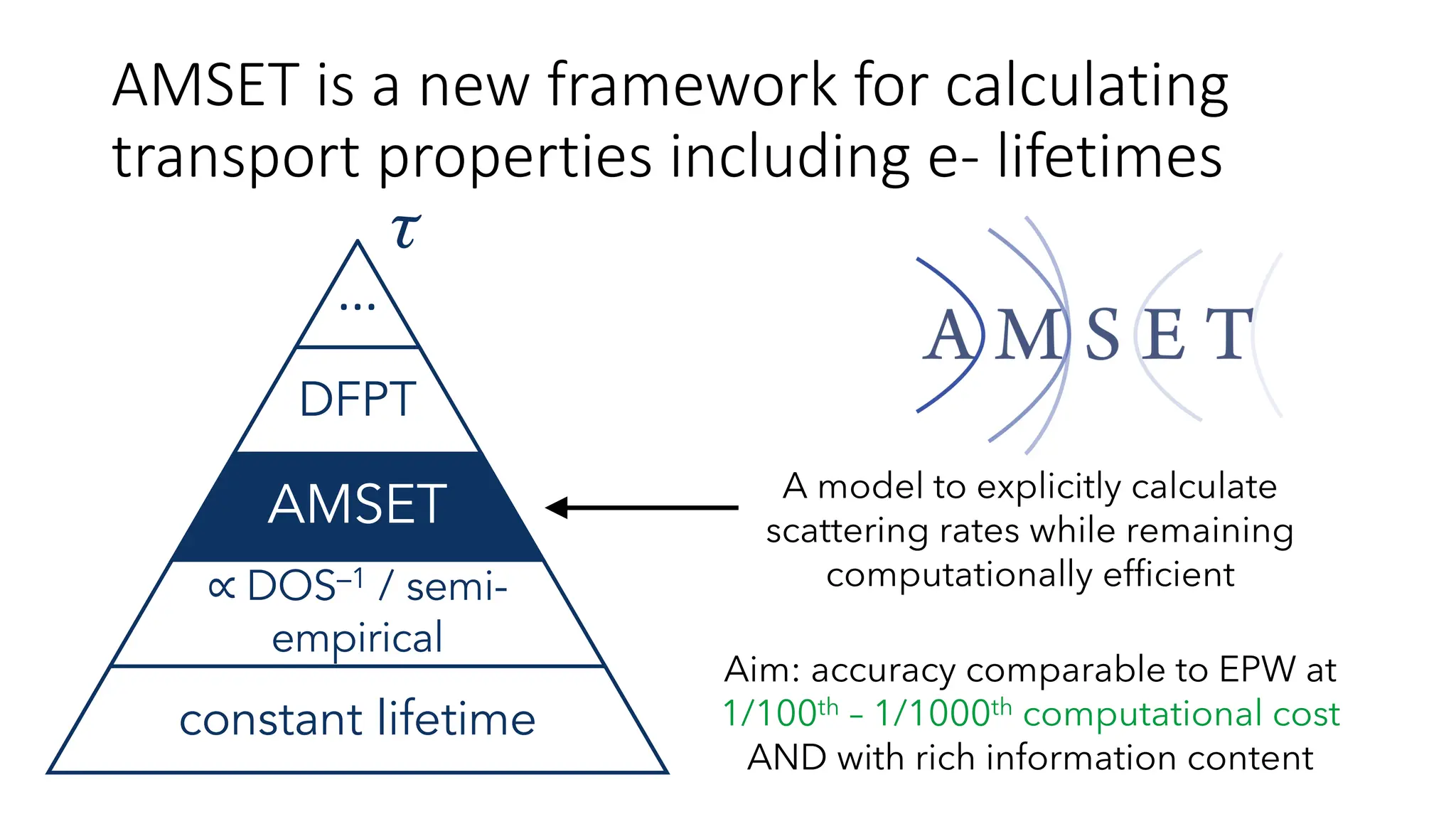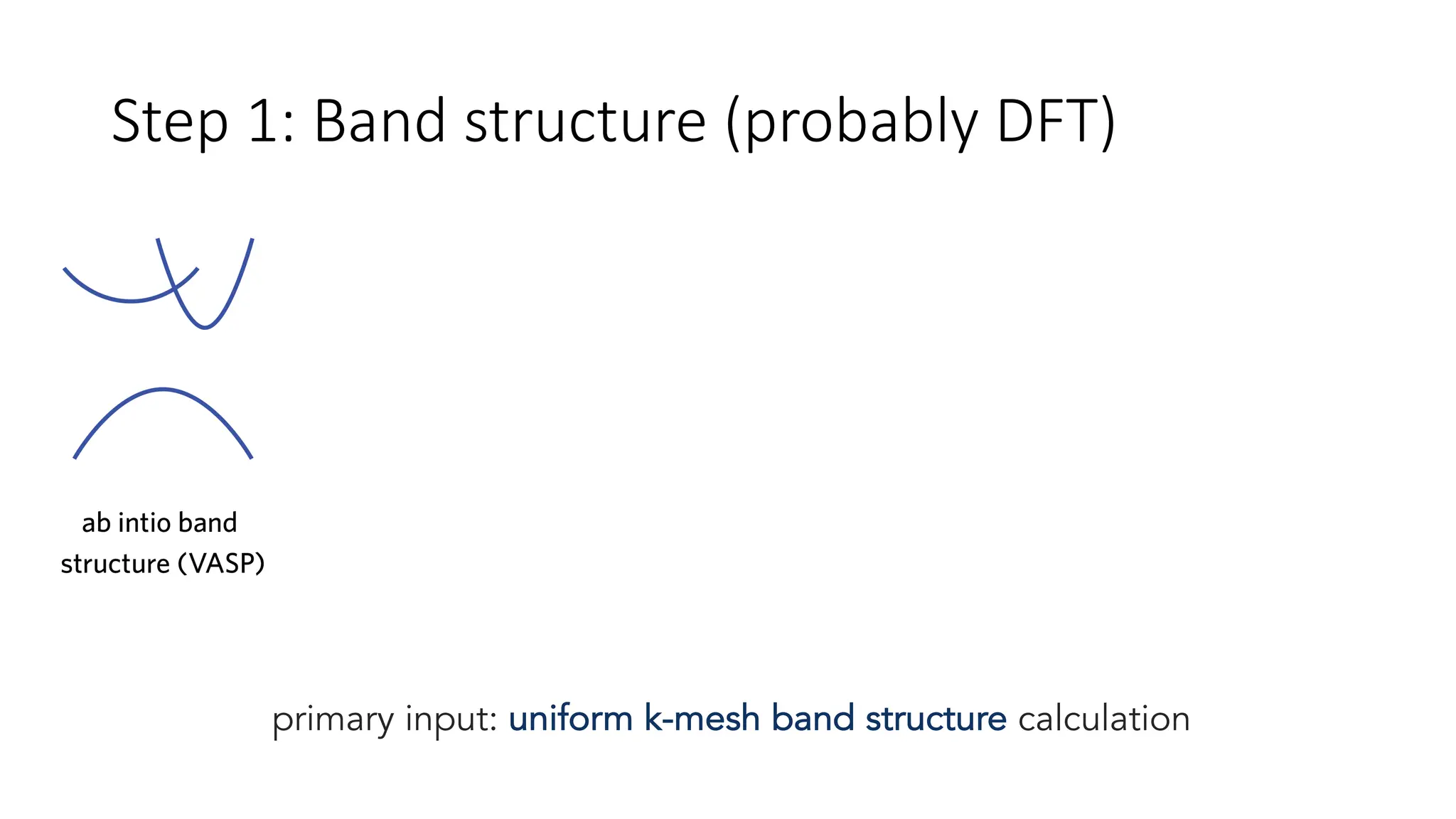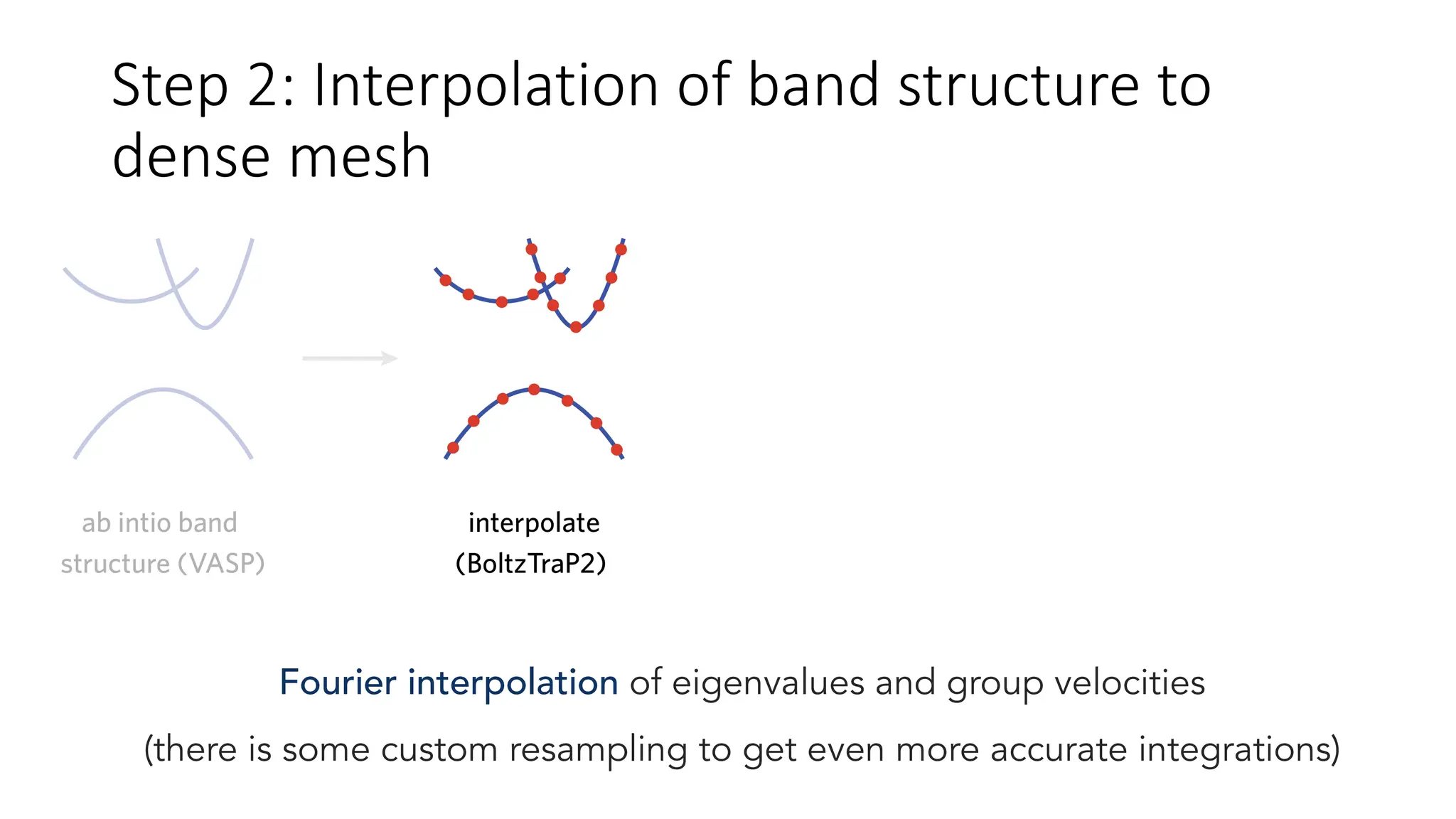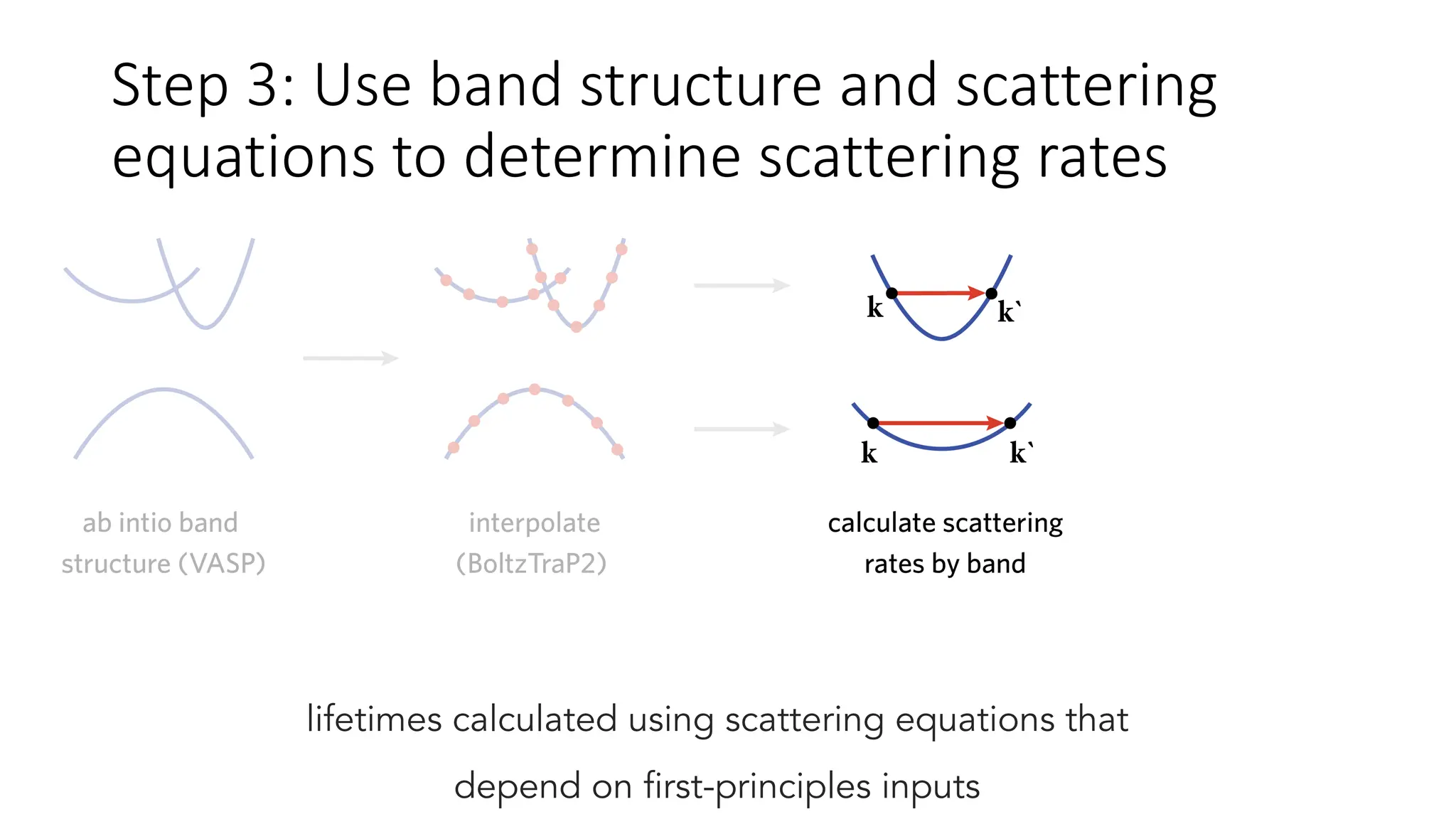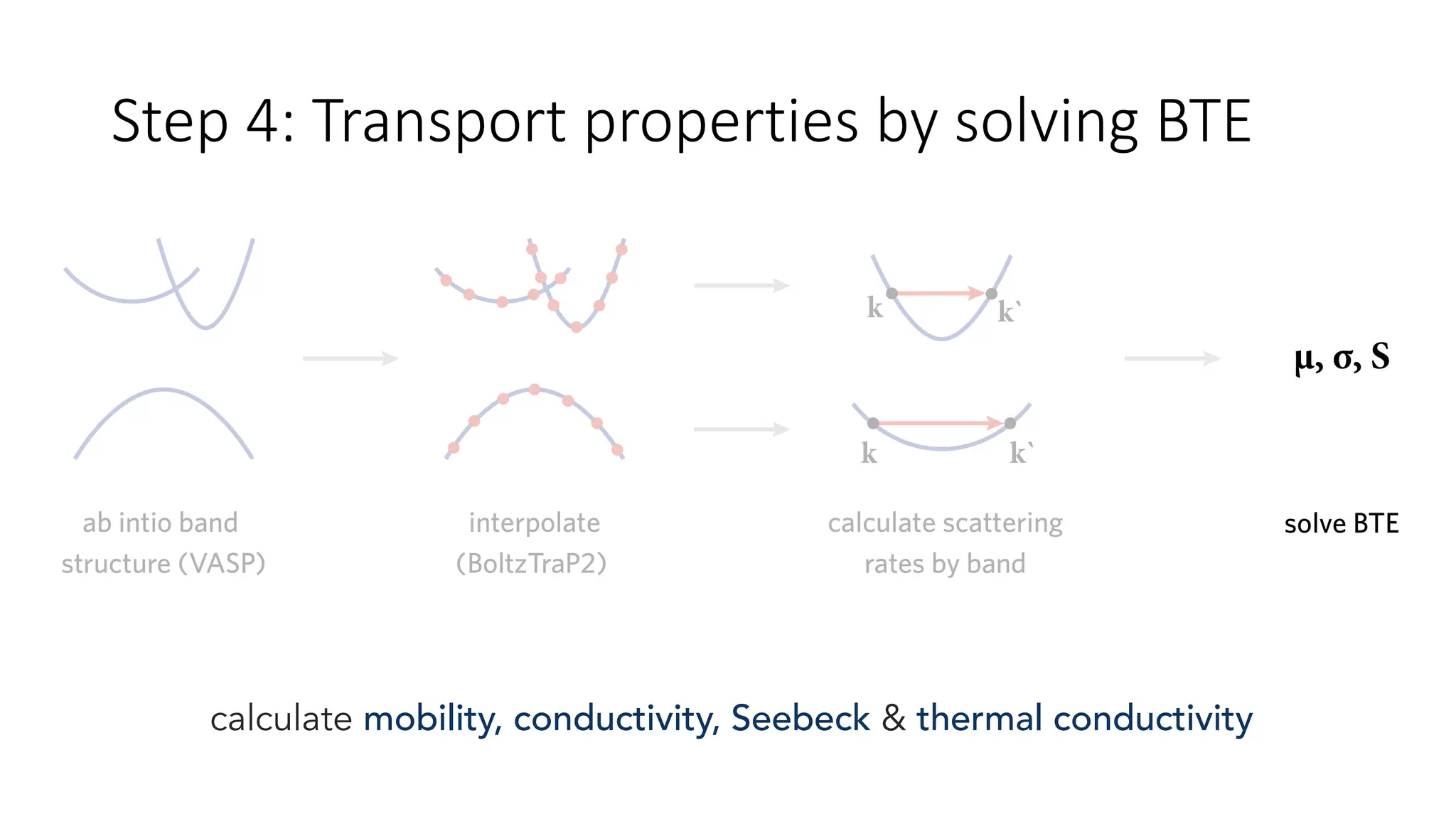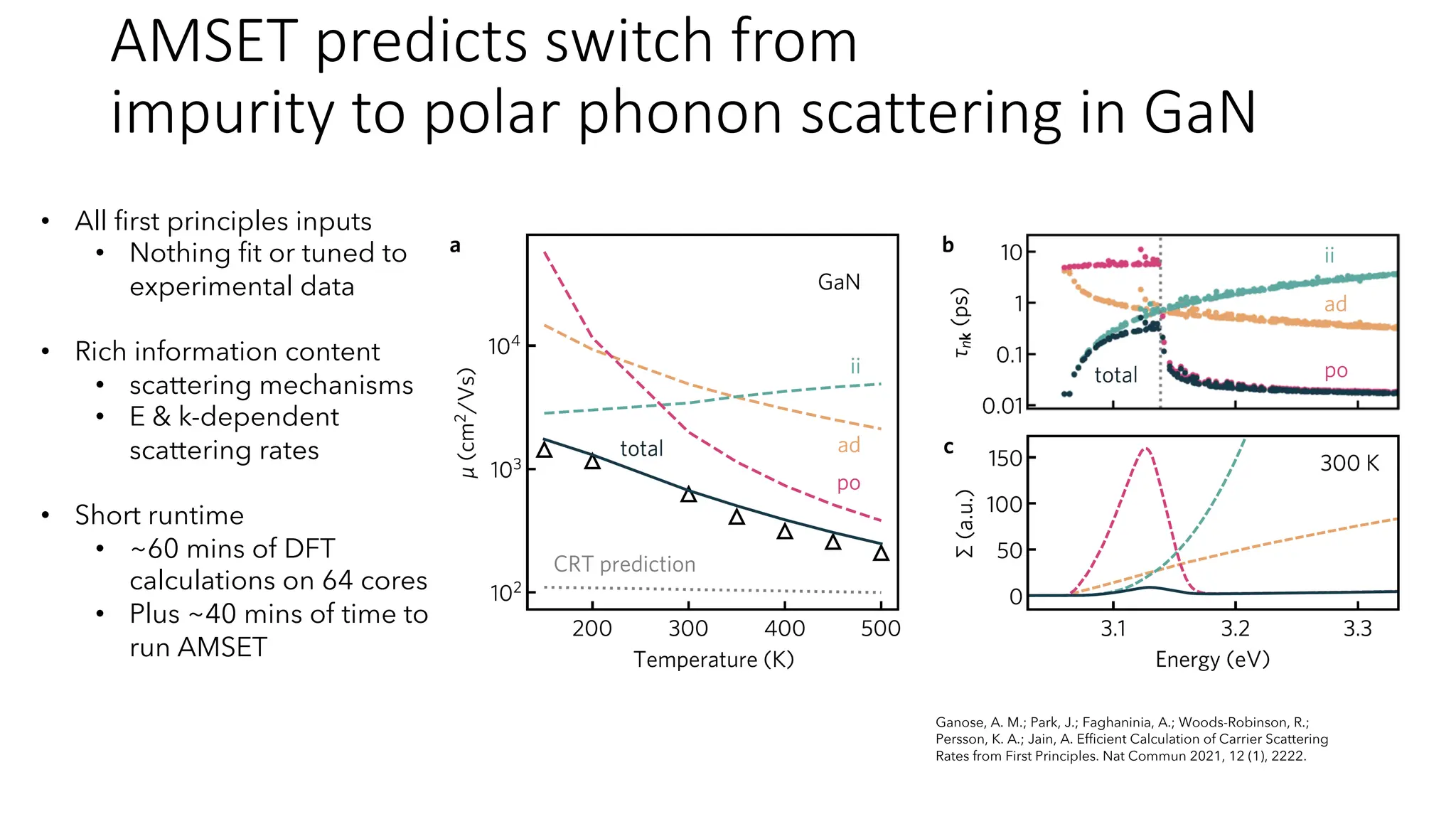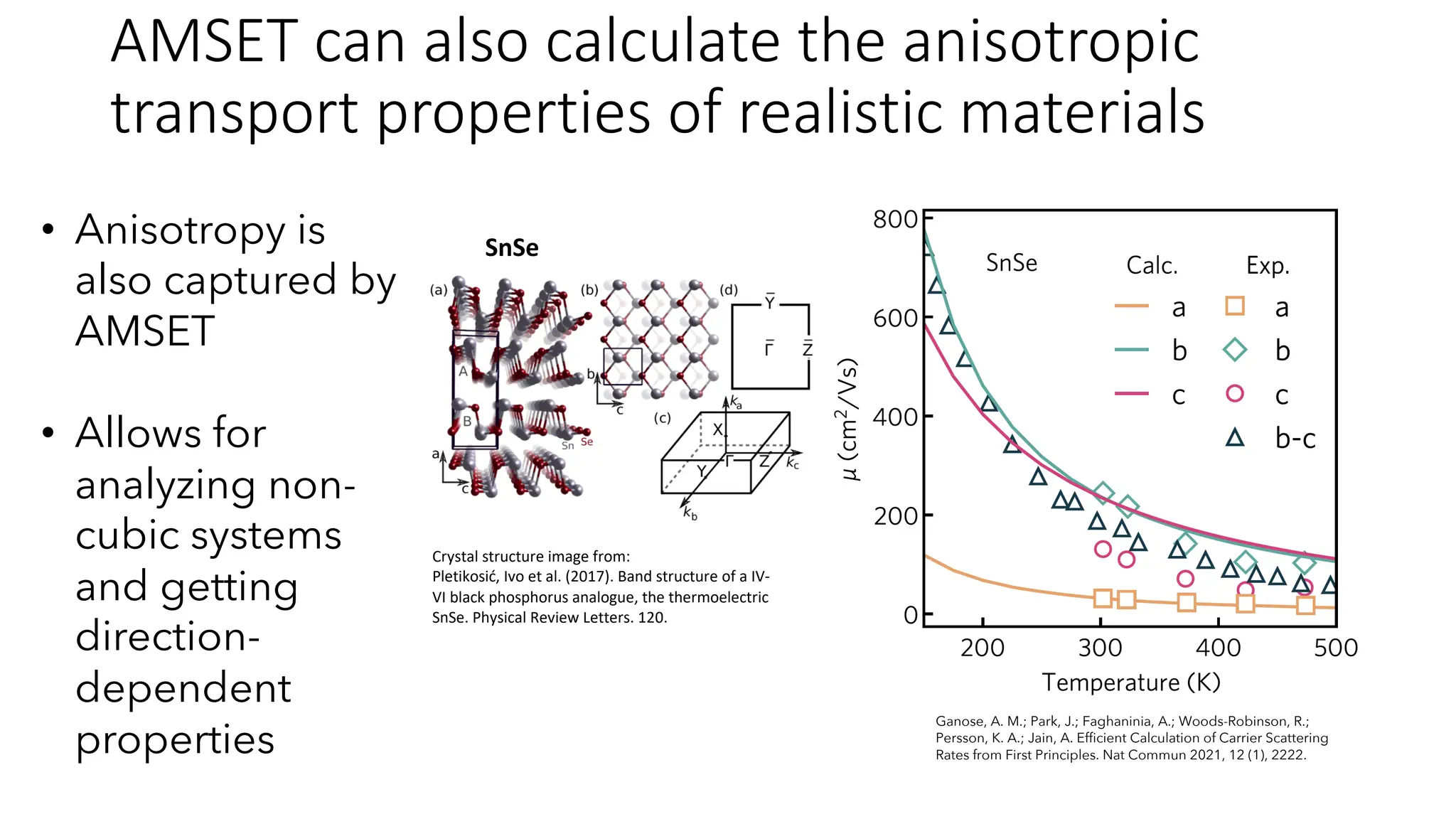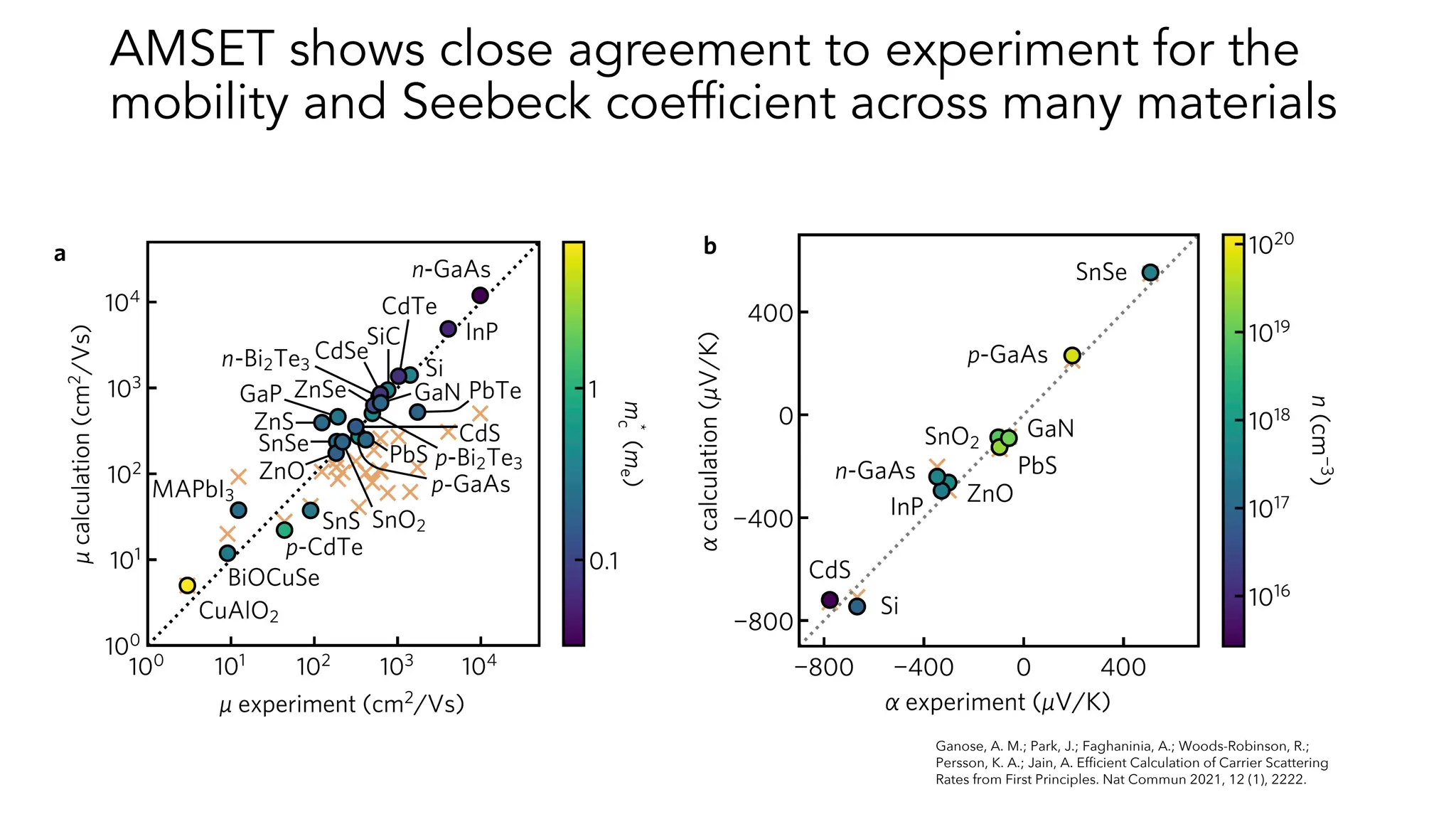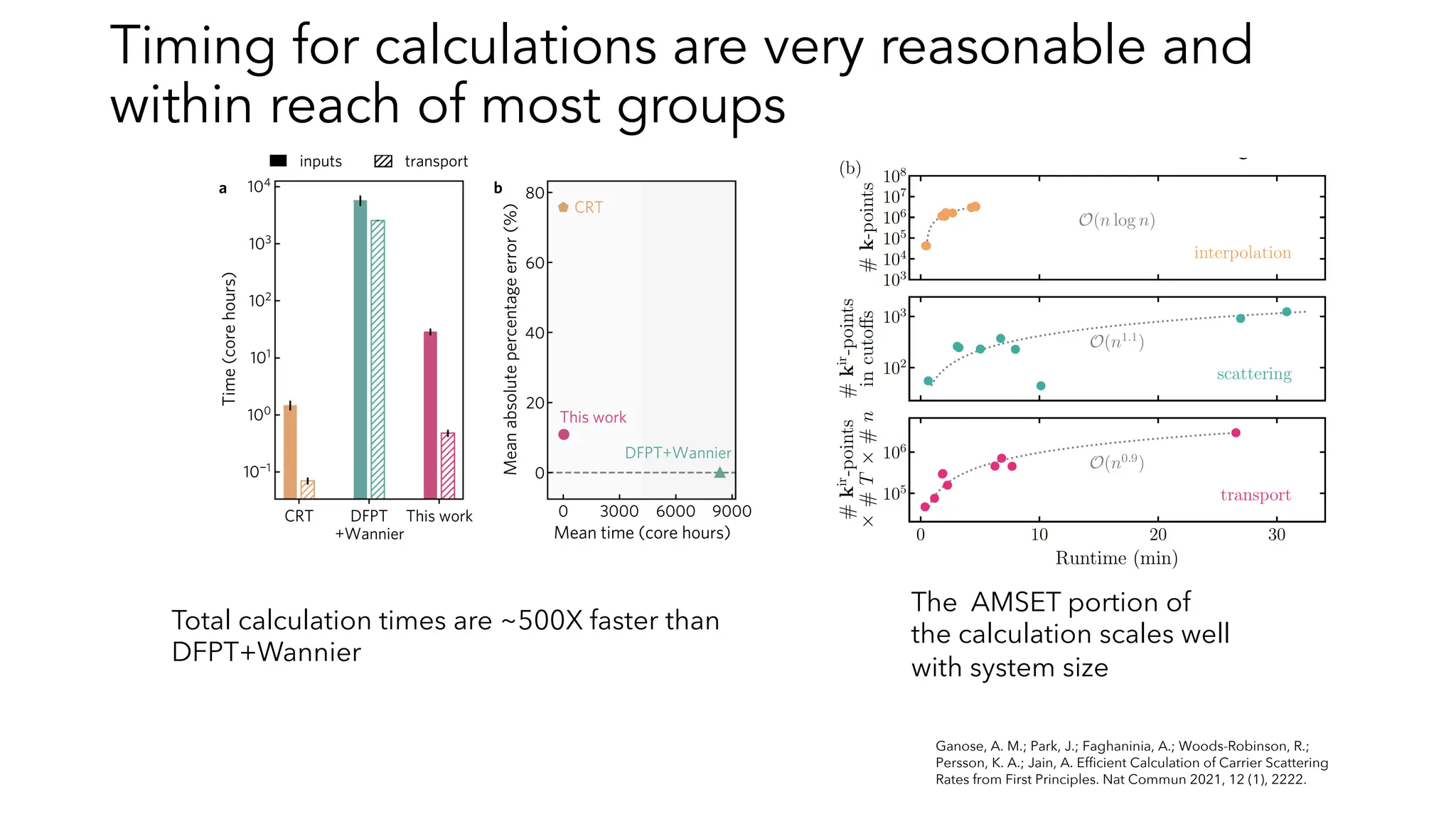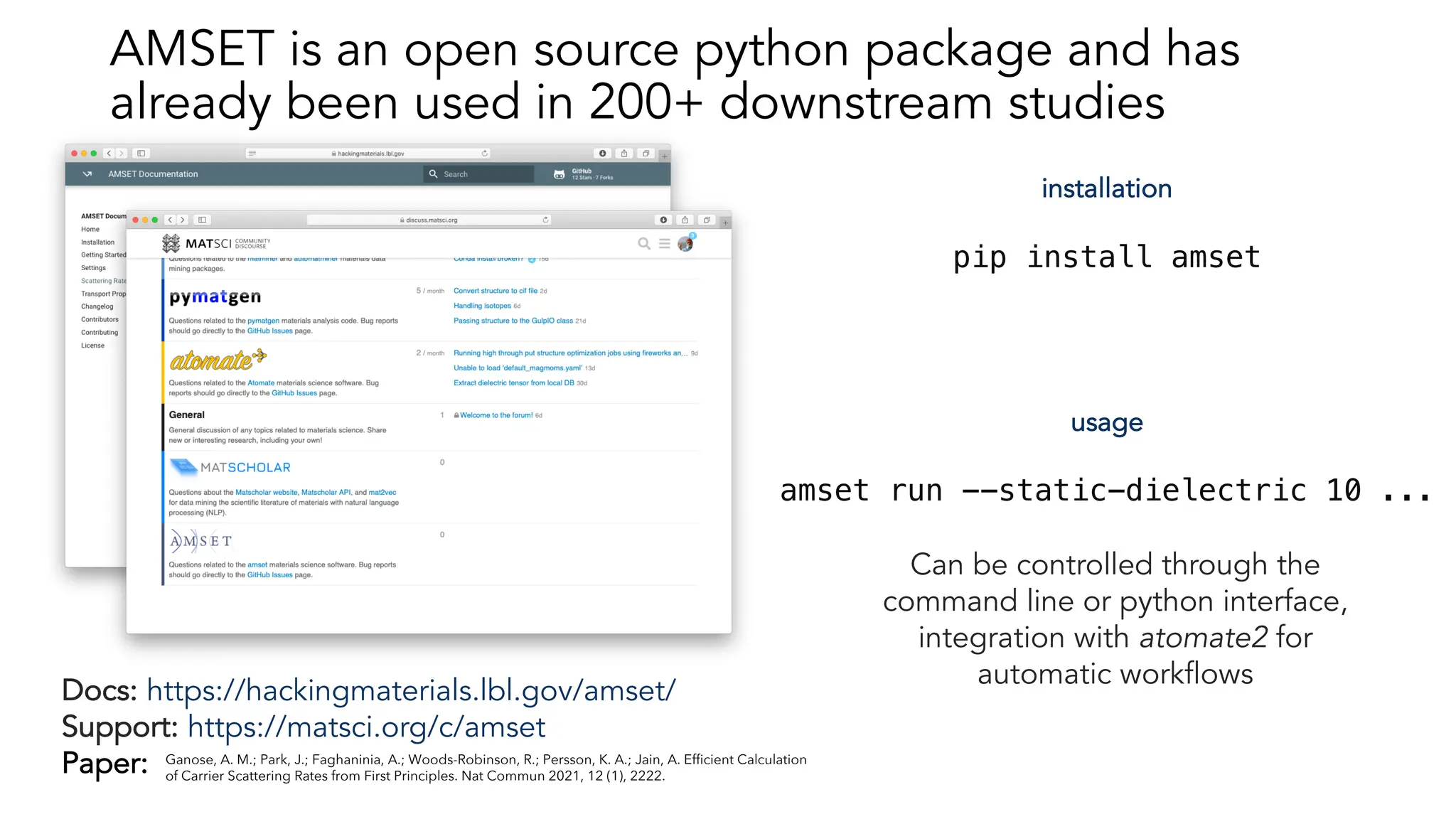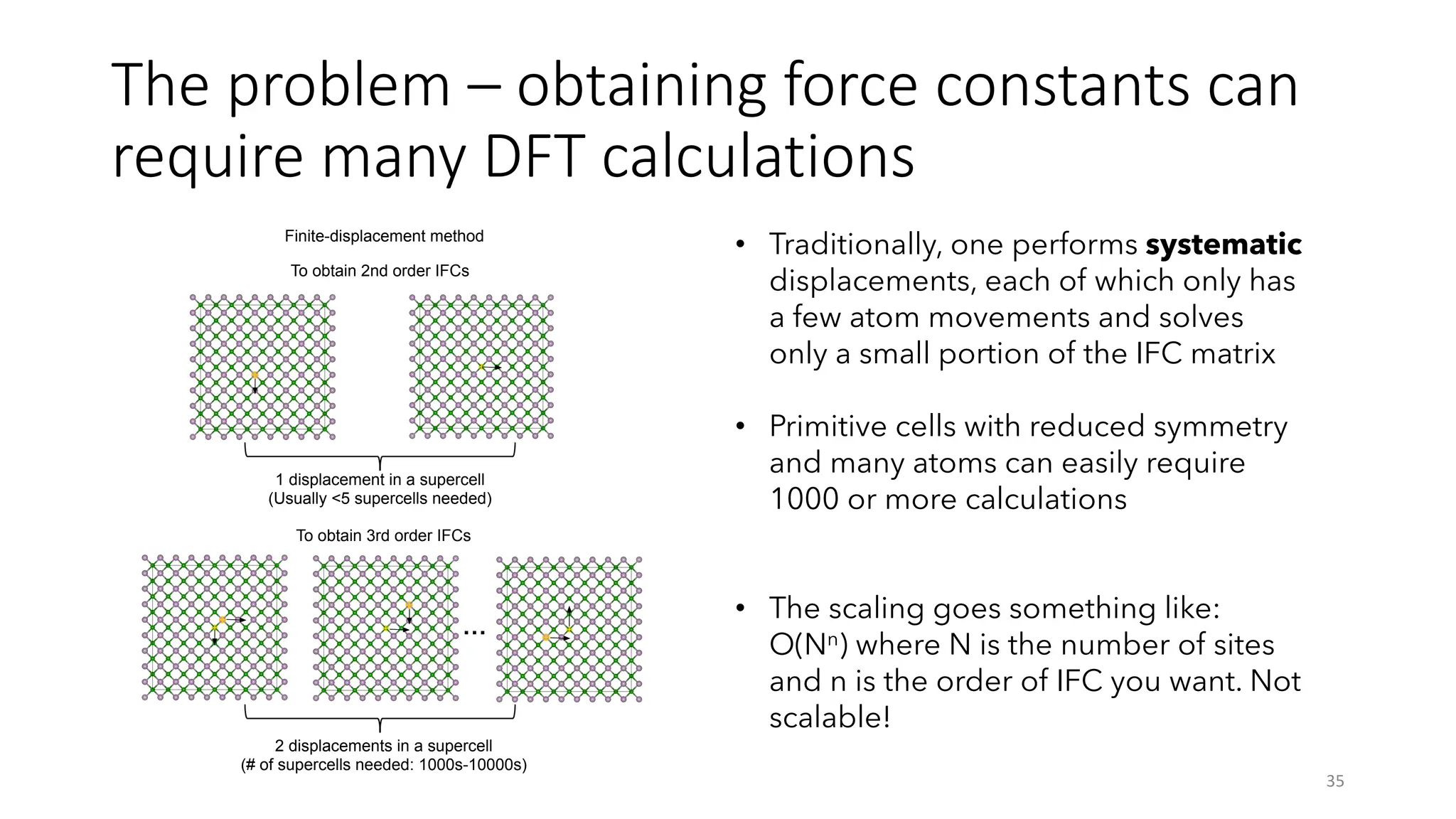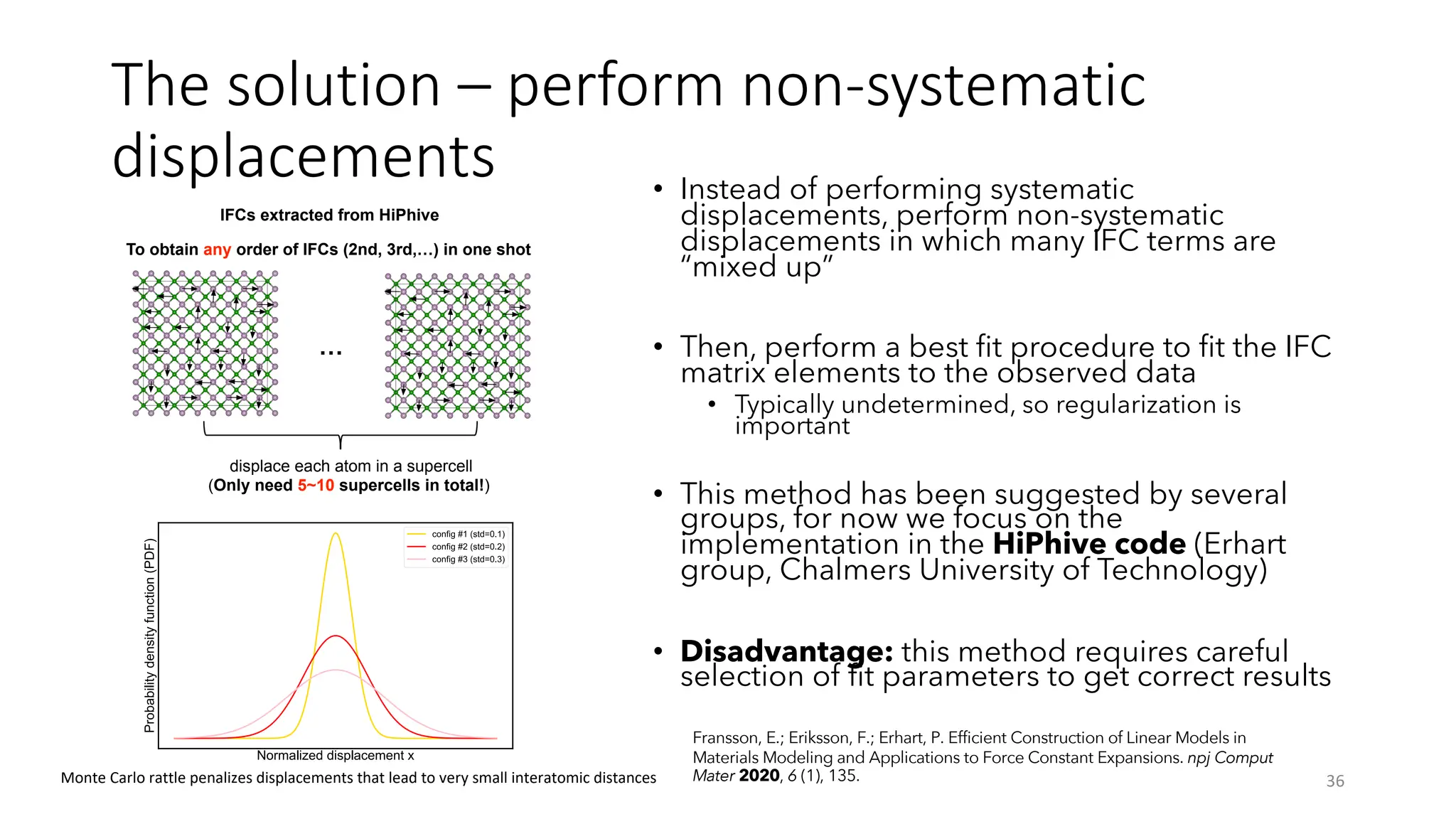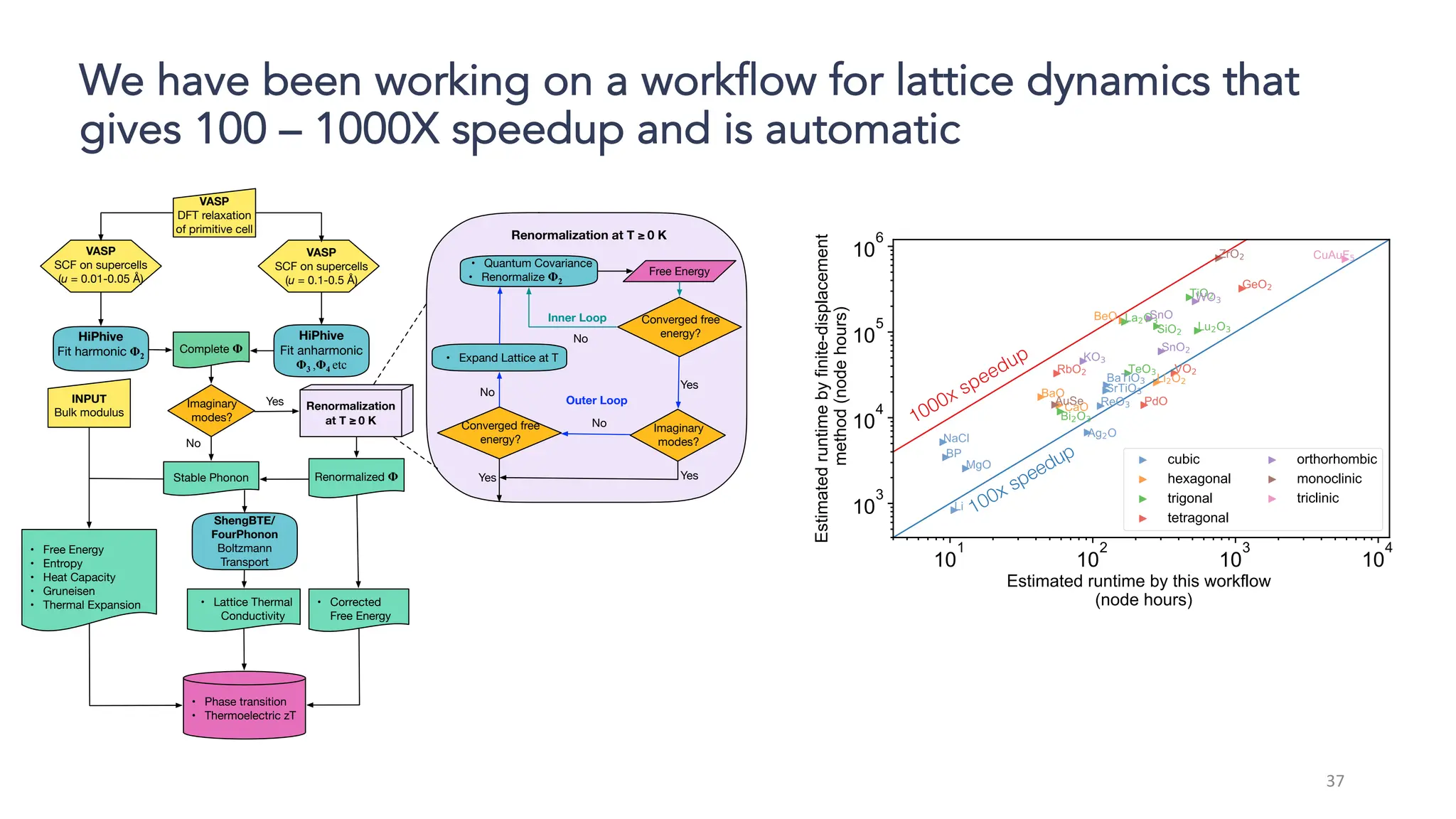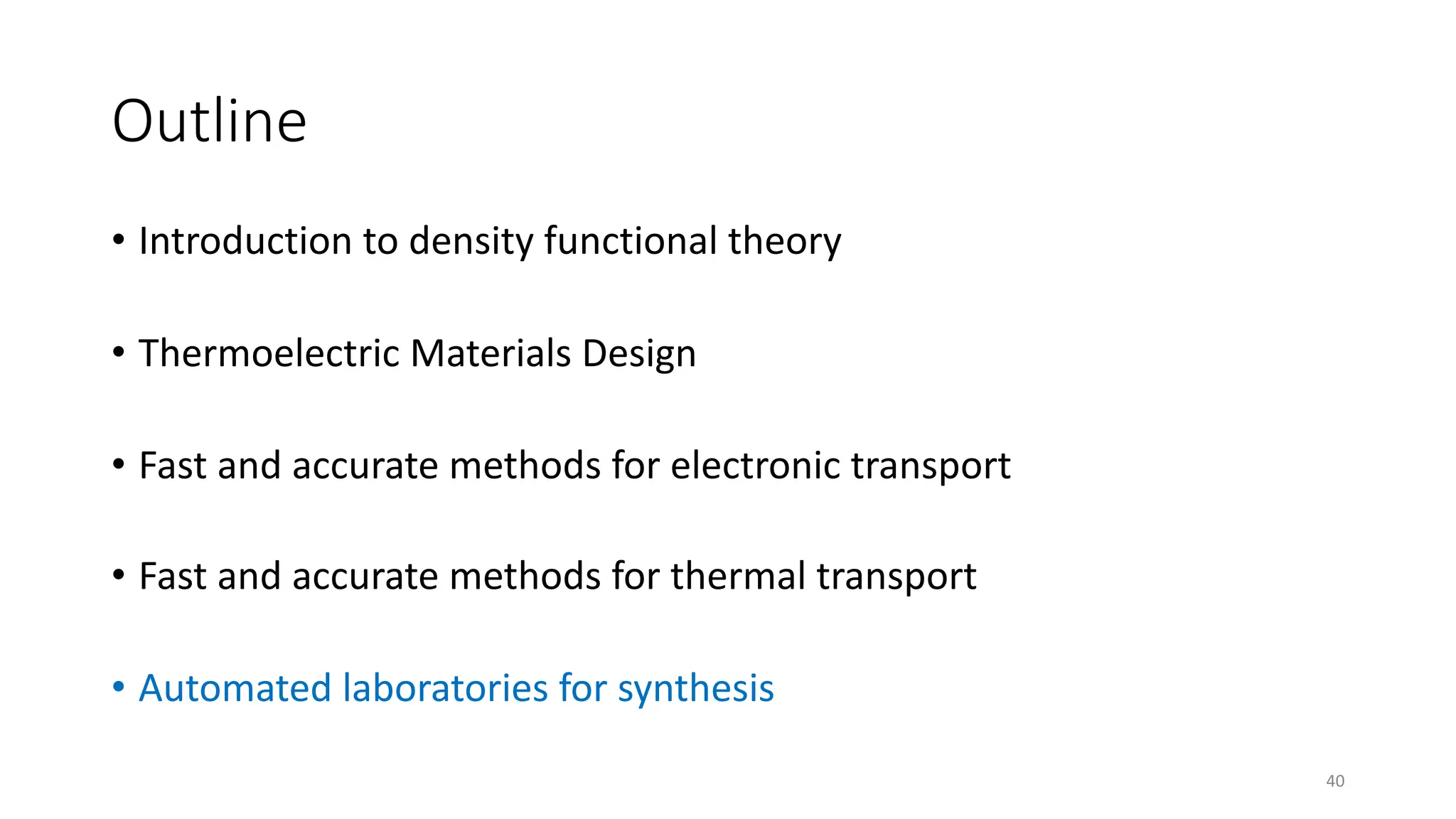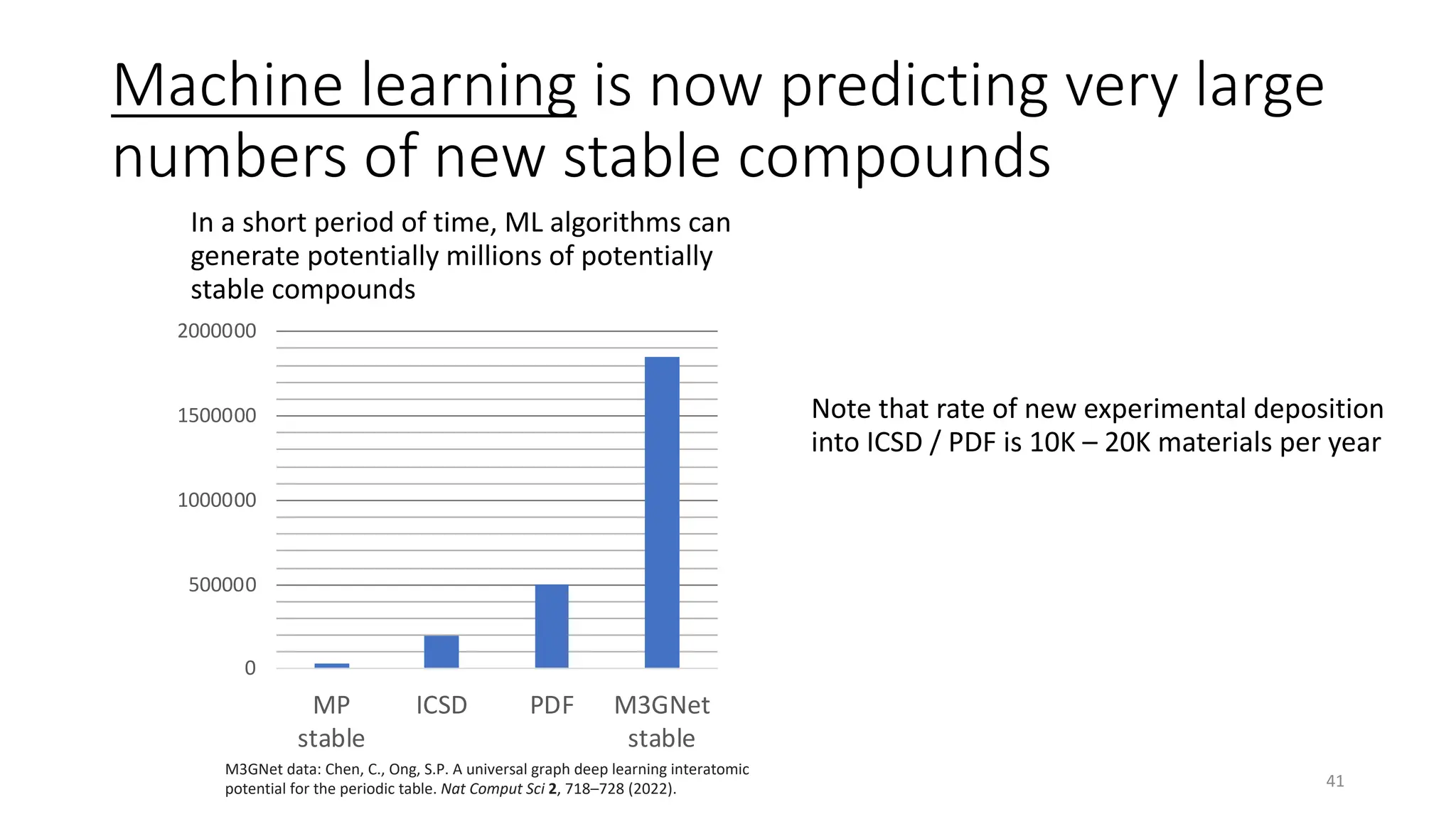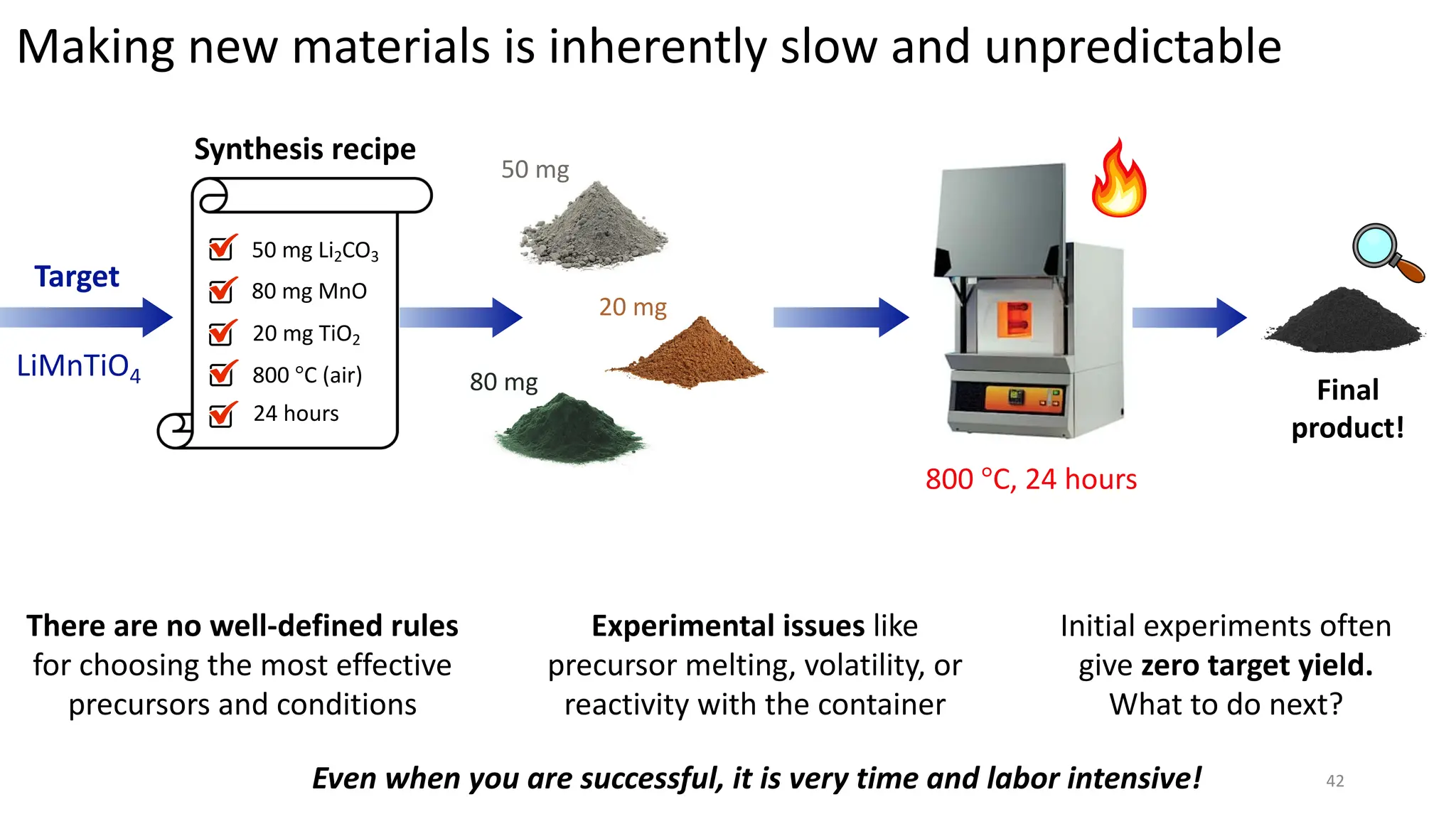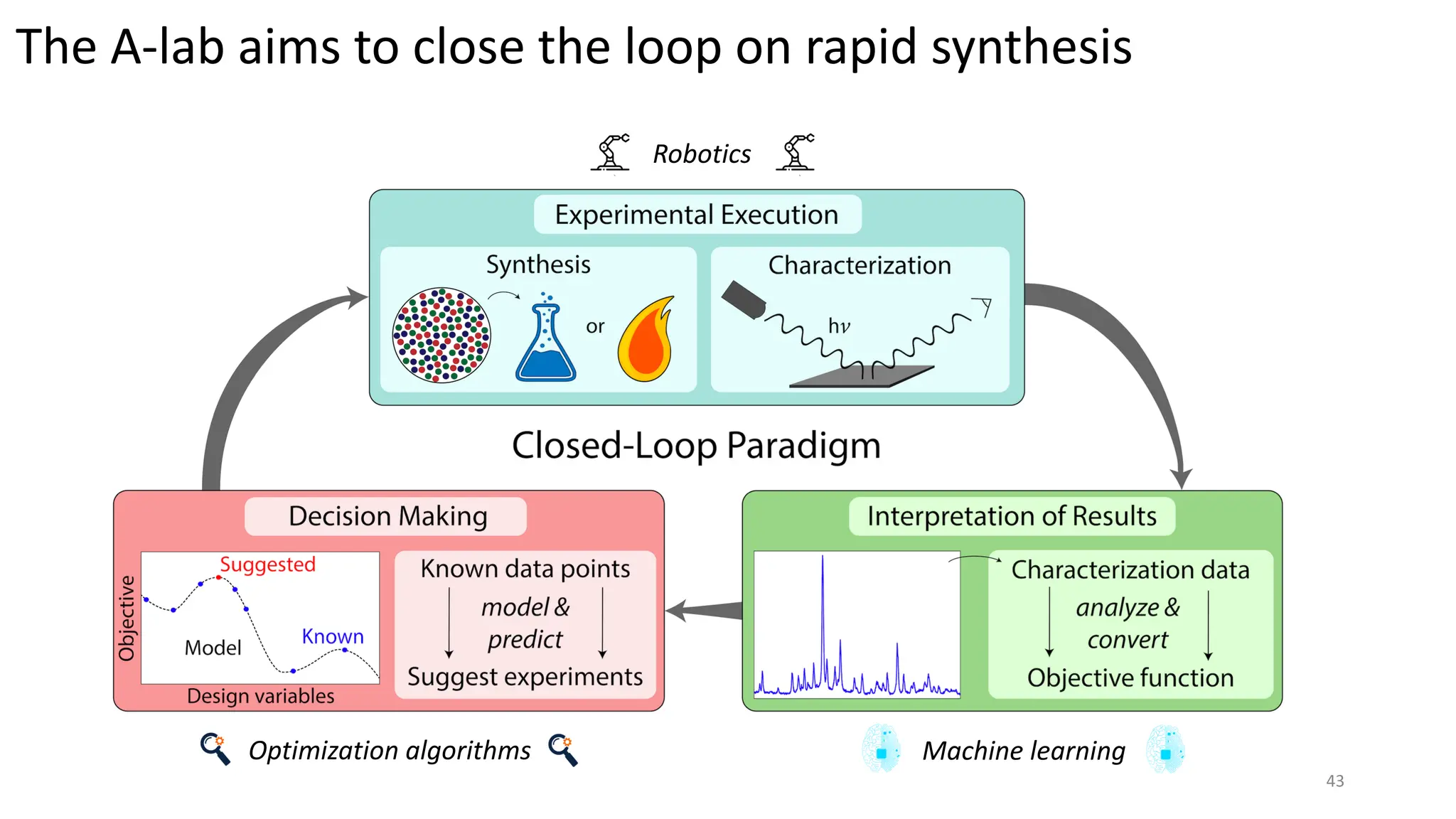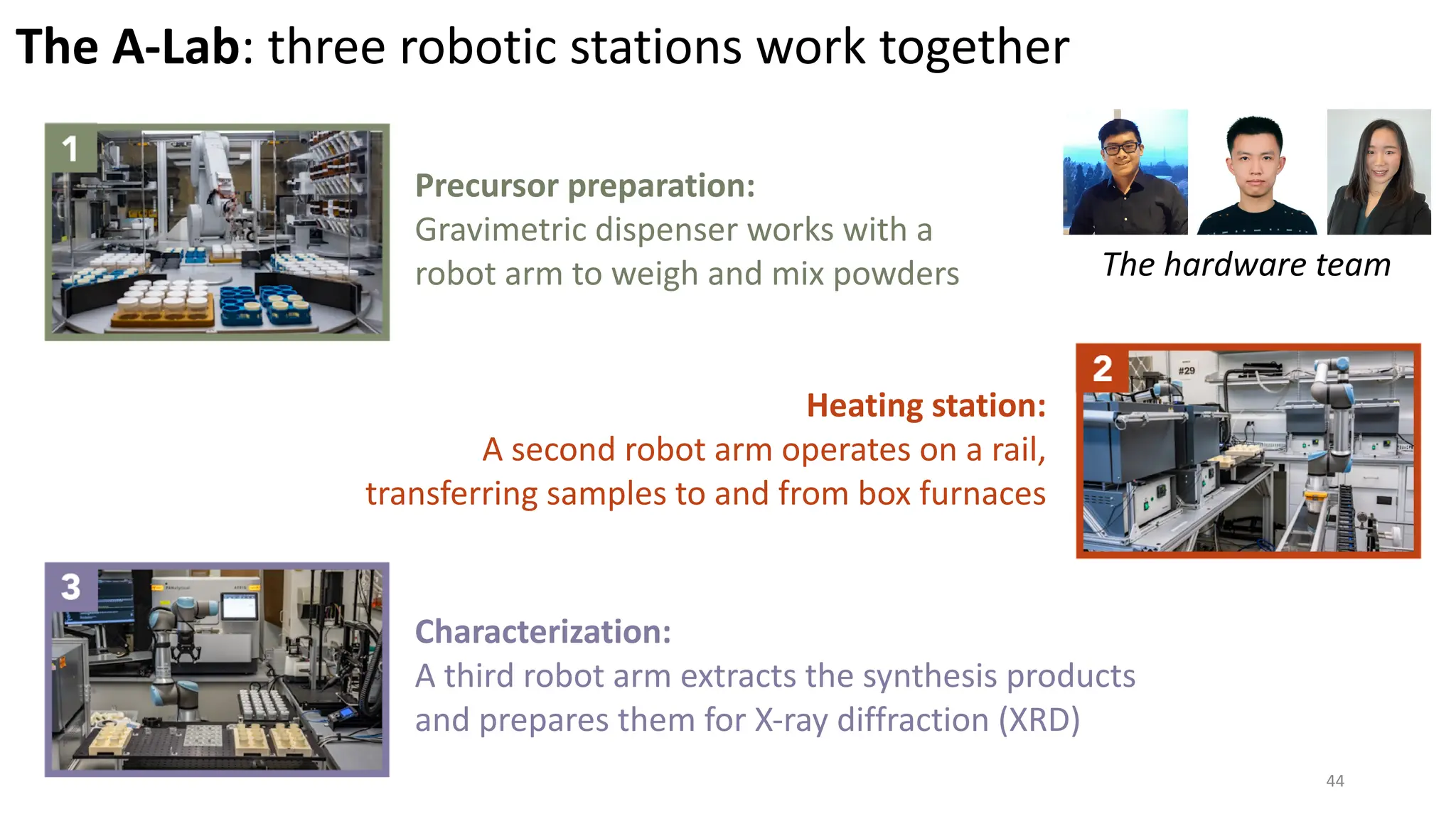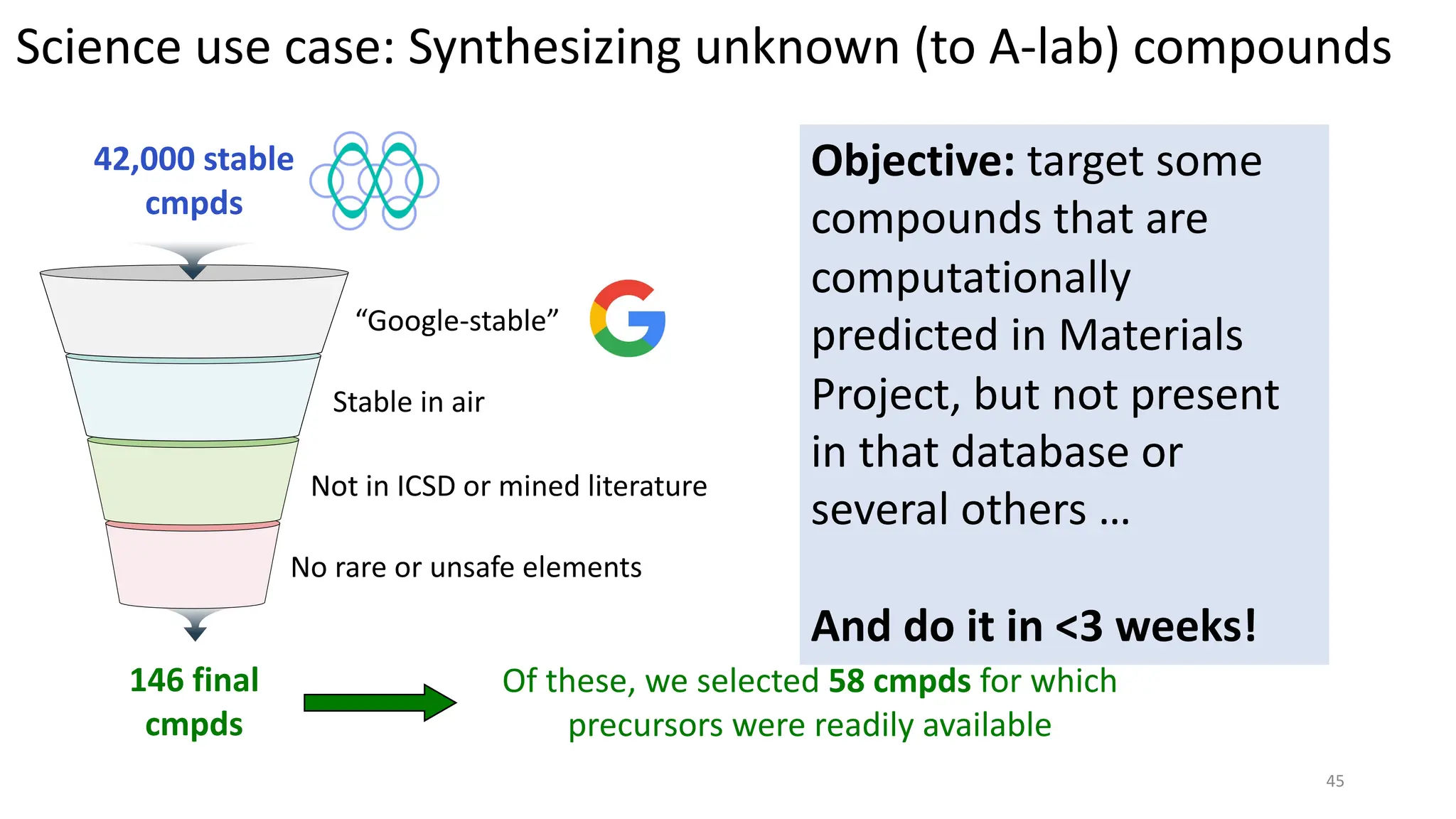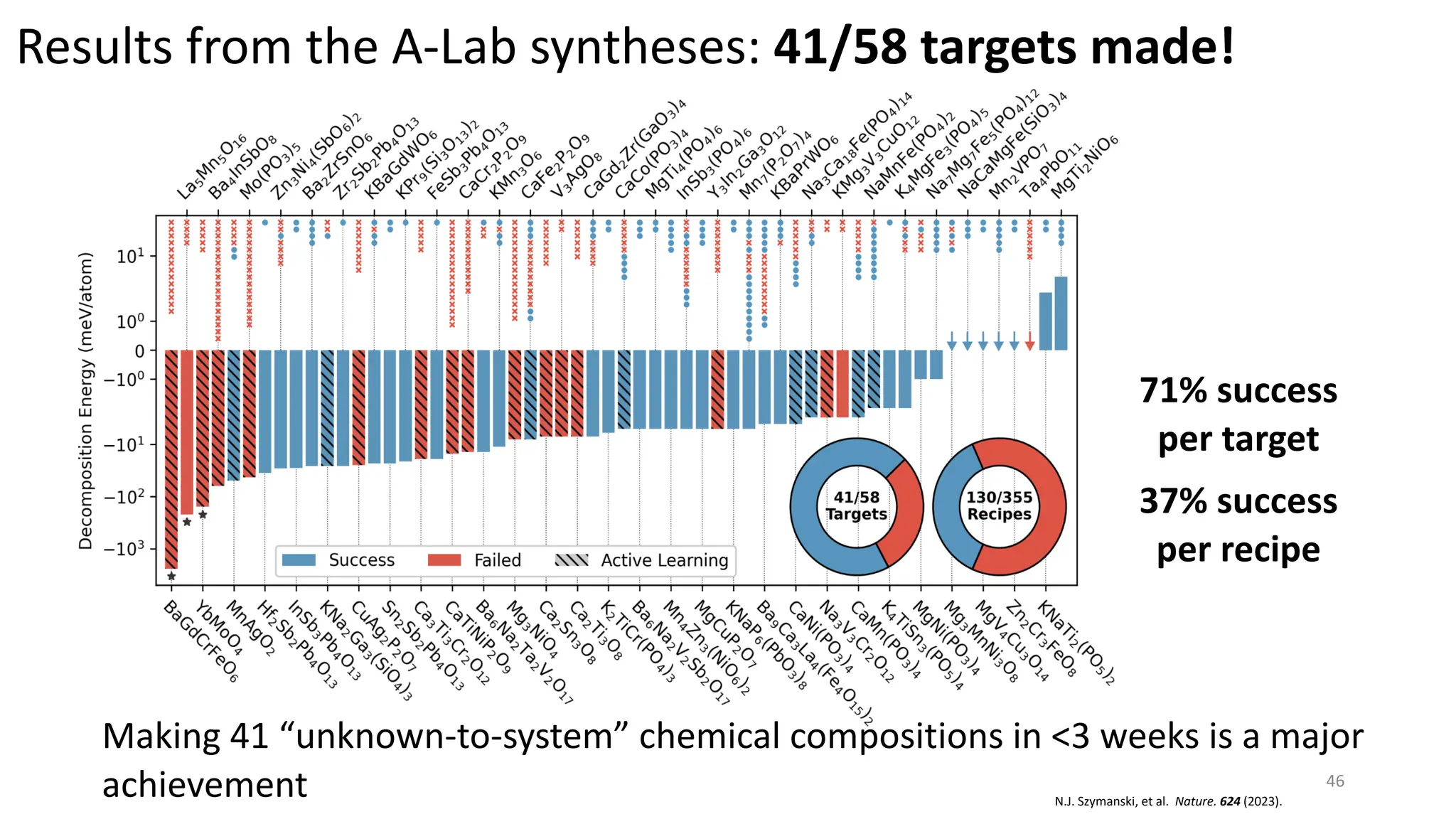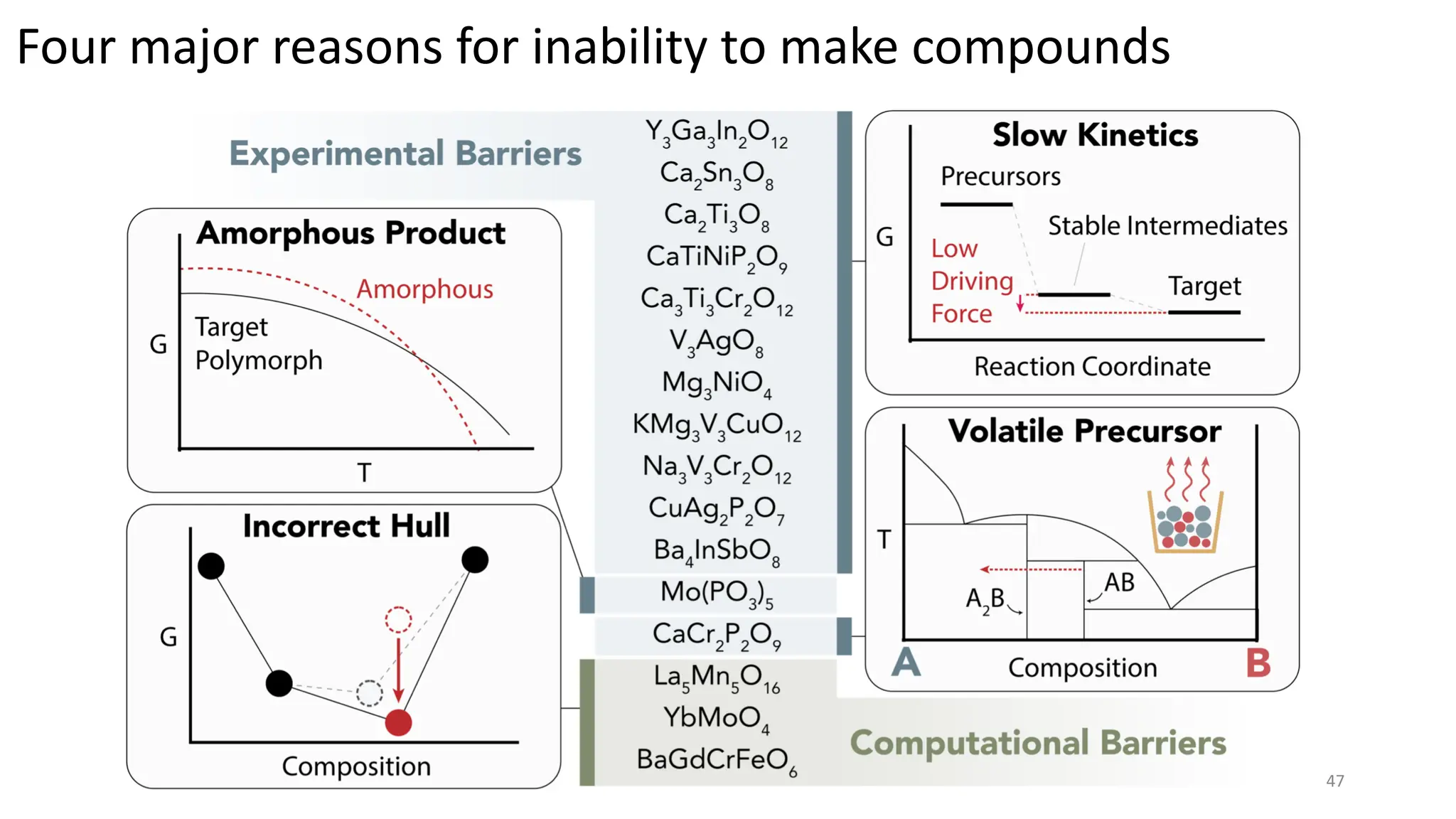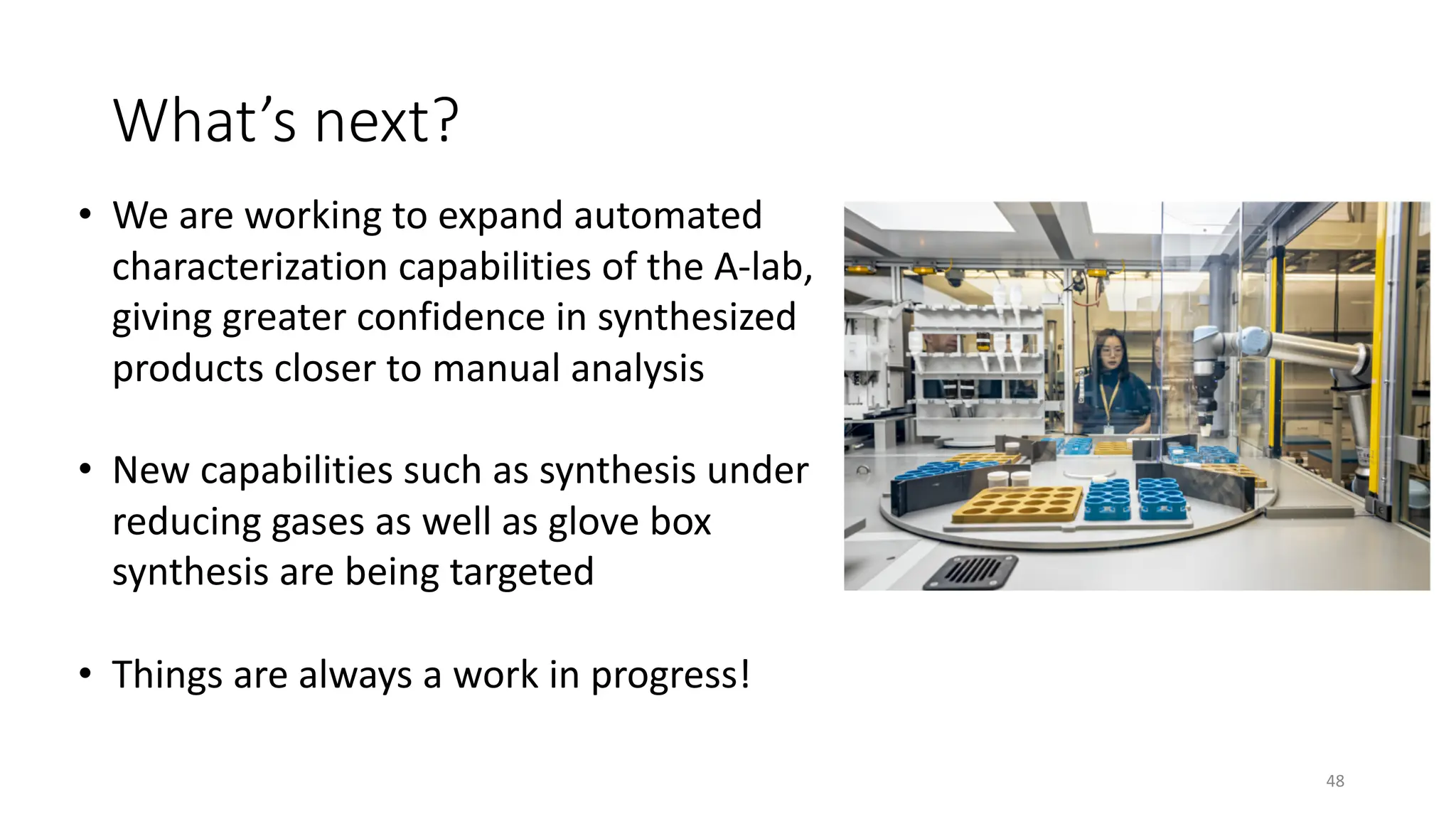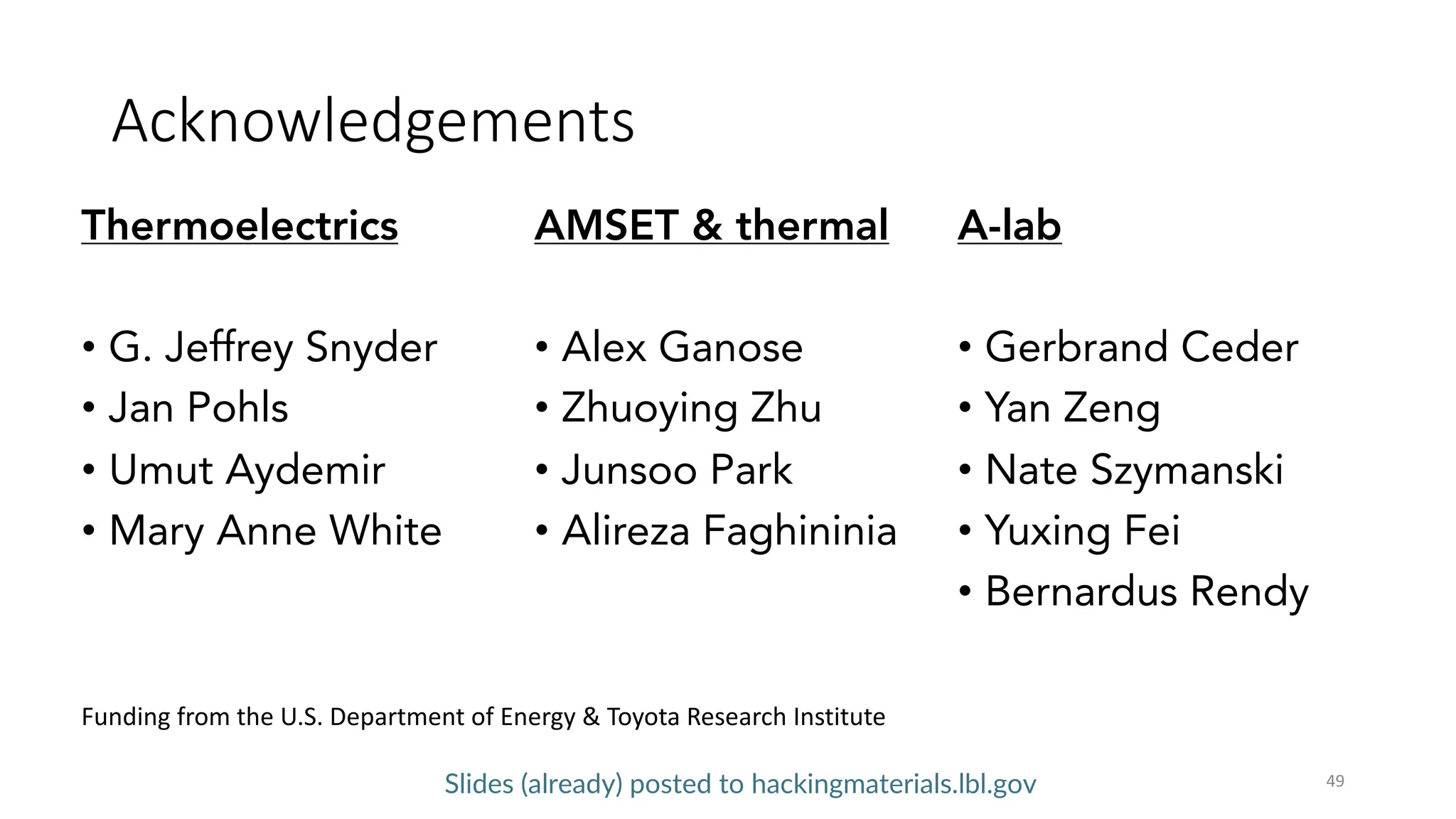Anubhav Jain presented on using density functional theory and high-throughput calculations to design advanced materials for energy applications. Key points included:
1) Density functional theory can be used to model materials physics and properties by approximating many-body quantum mechanics.
2) Thermoelectric materials were discussed as an example application, where the goal is to optimize the figure of merit which depends on conductivity, Seebeck coefficient, and thermal conductivity.
3) High-throughput calculations were performed on over 50,000 materials to efficiently screen for promising thermoelectric candidates like TmAgTe2, though experimental validation is still needed due to approximations.
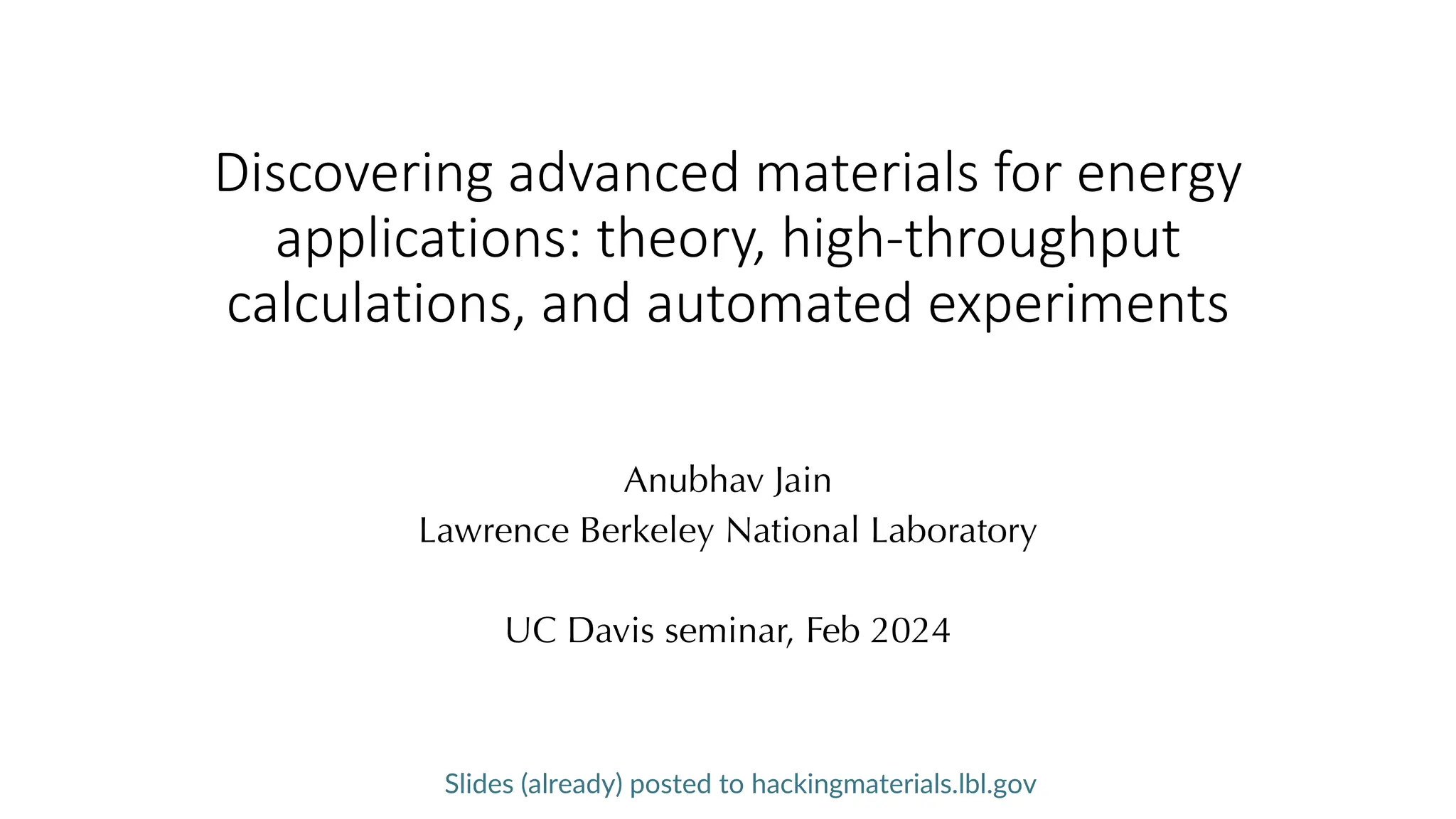
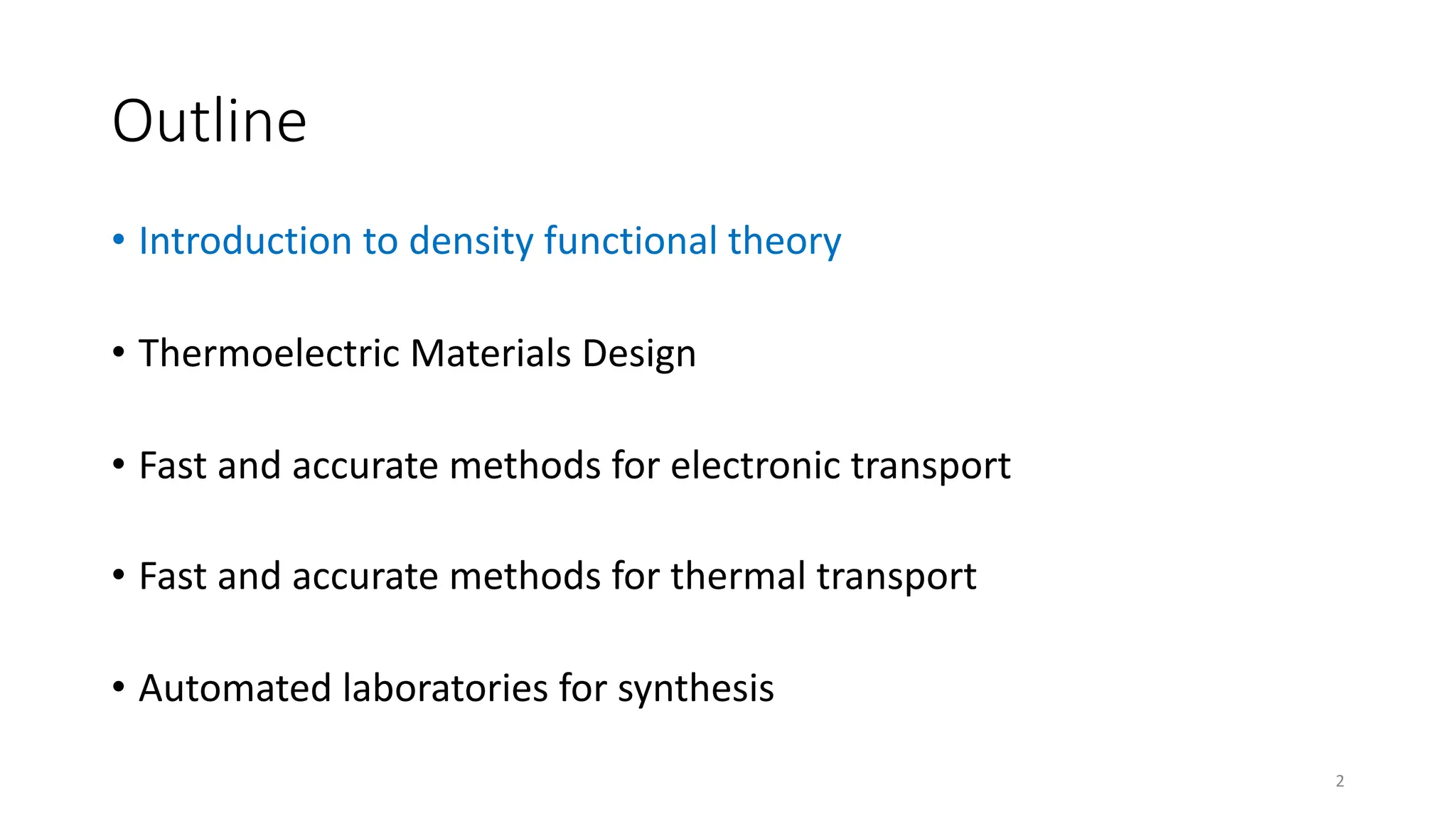
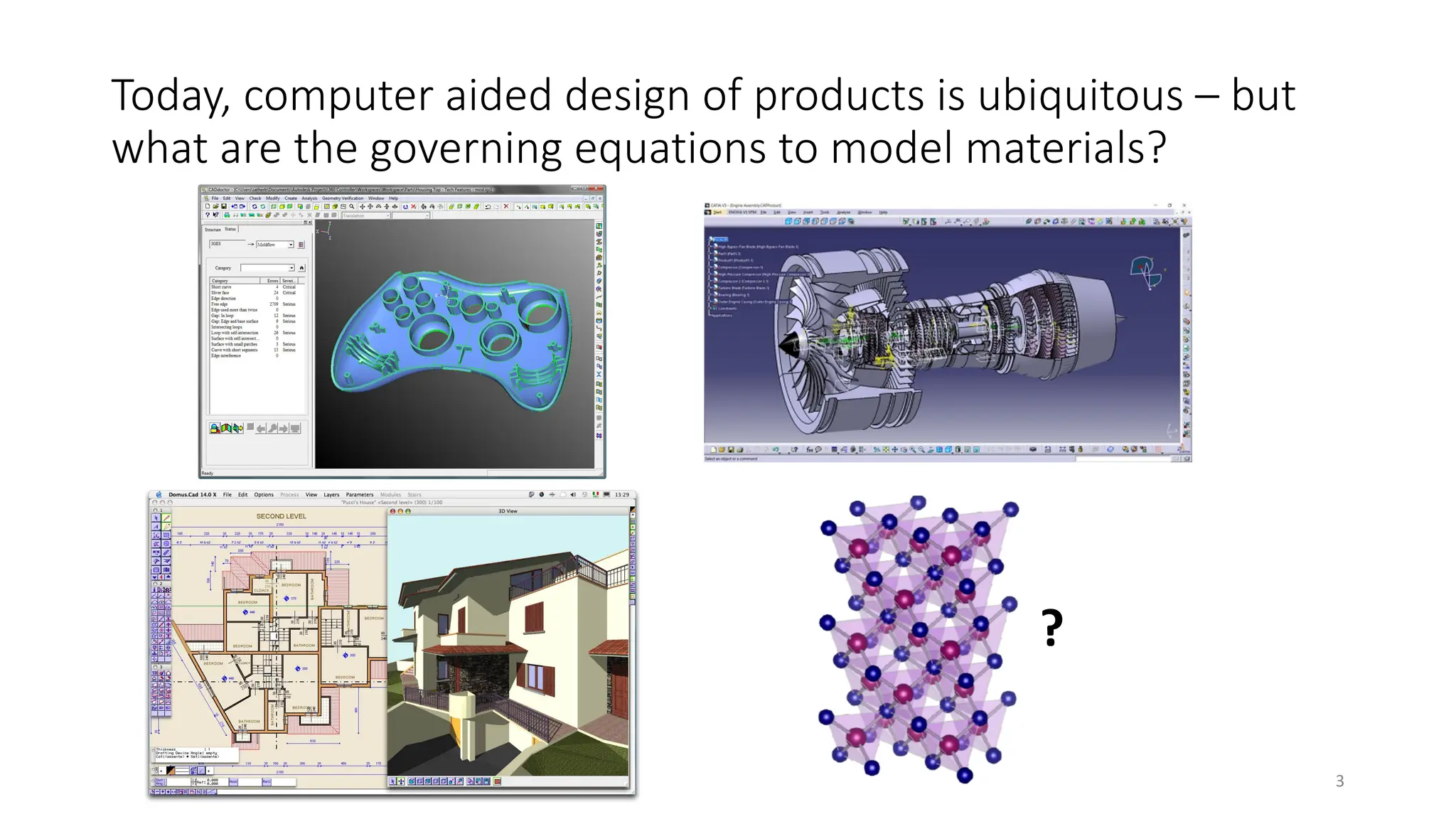
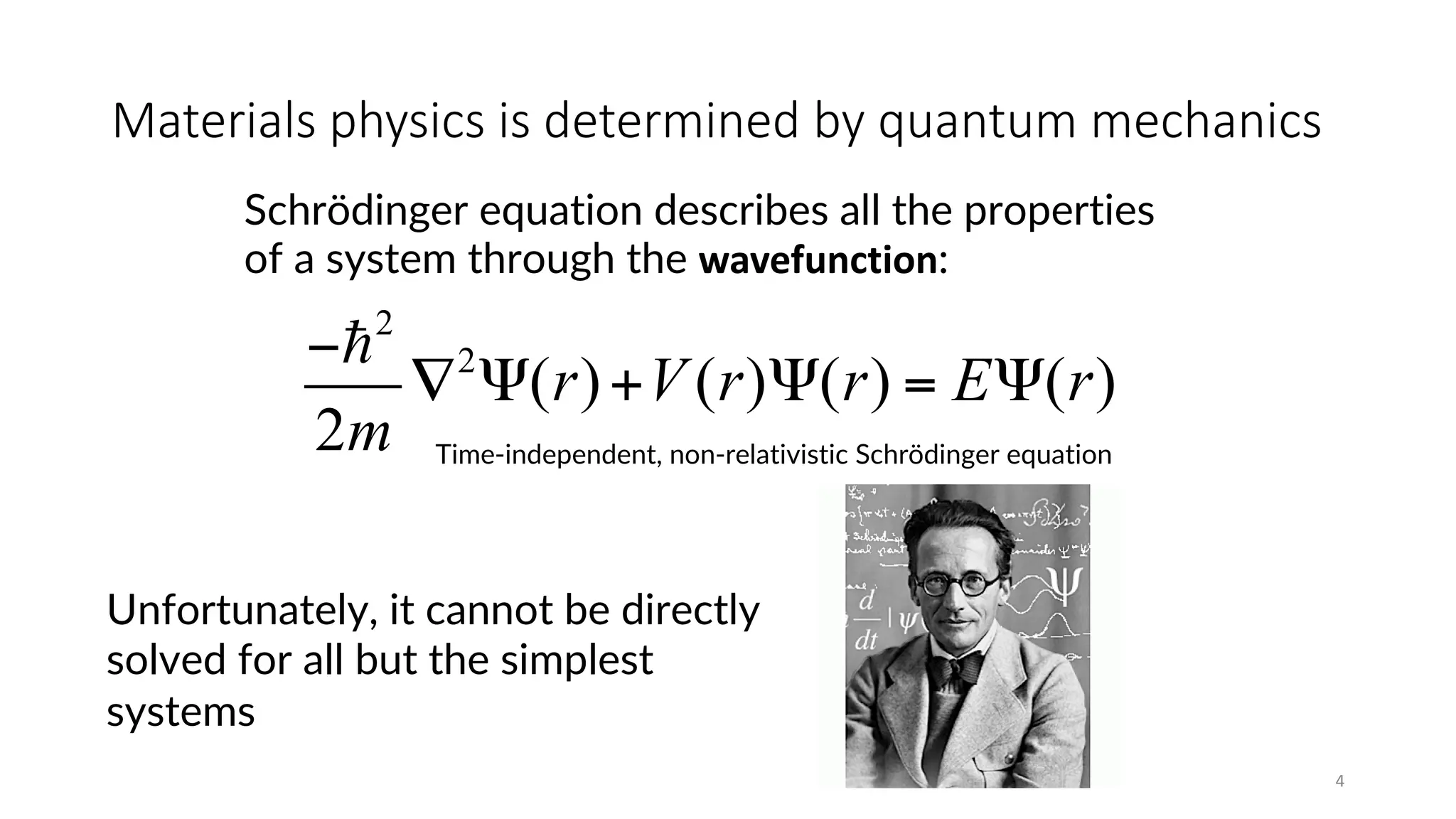
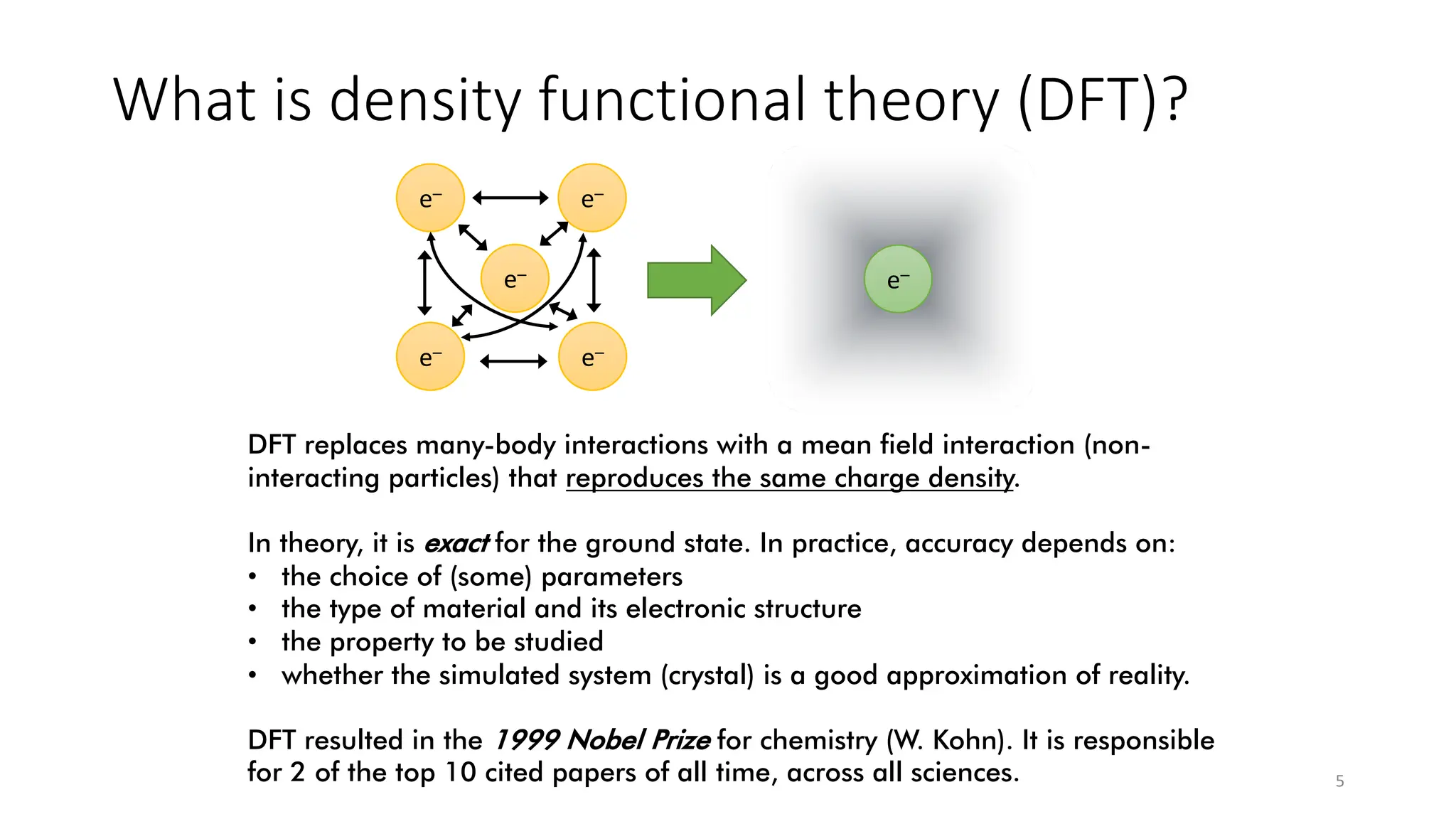
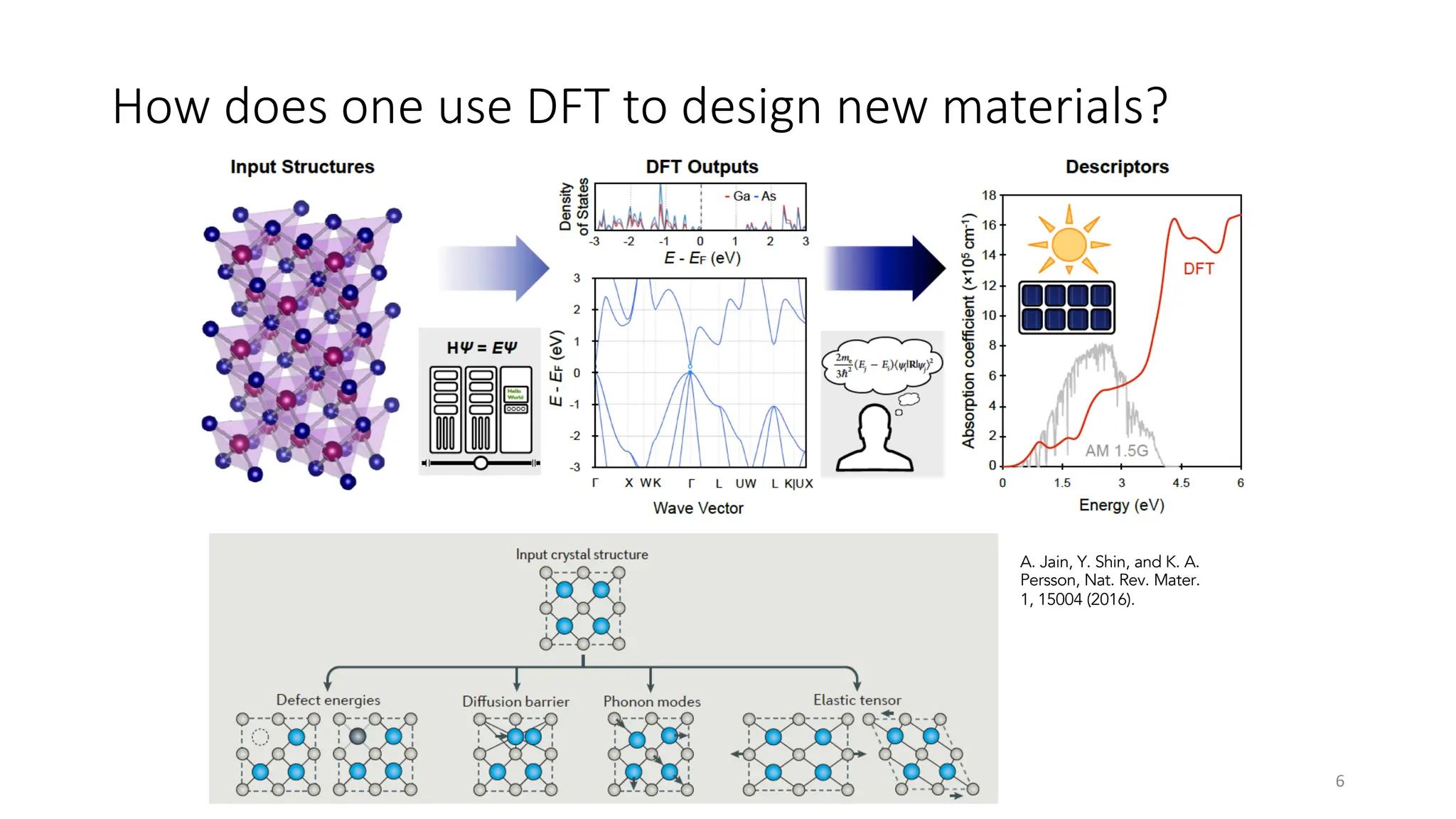
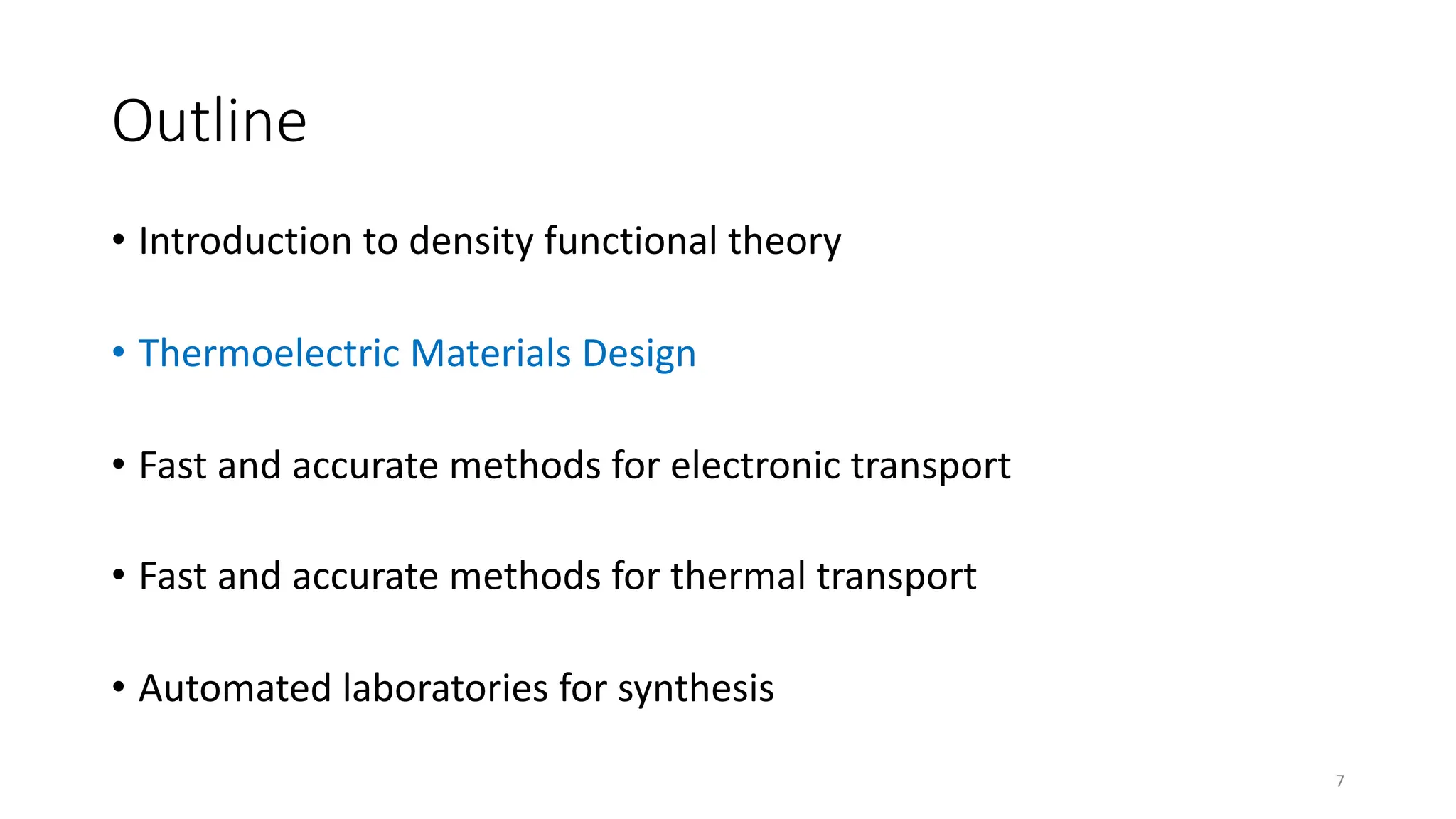
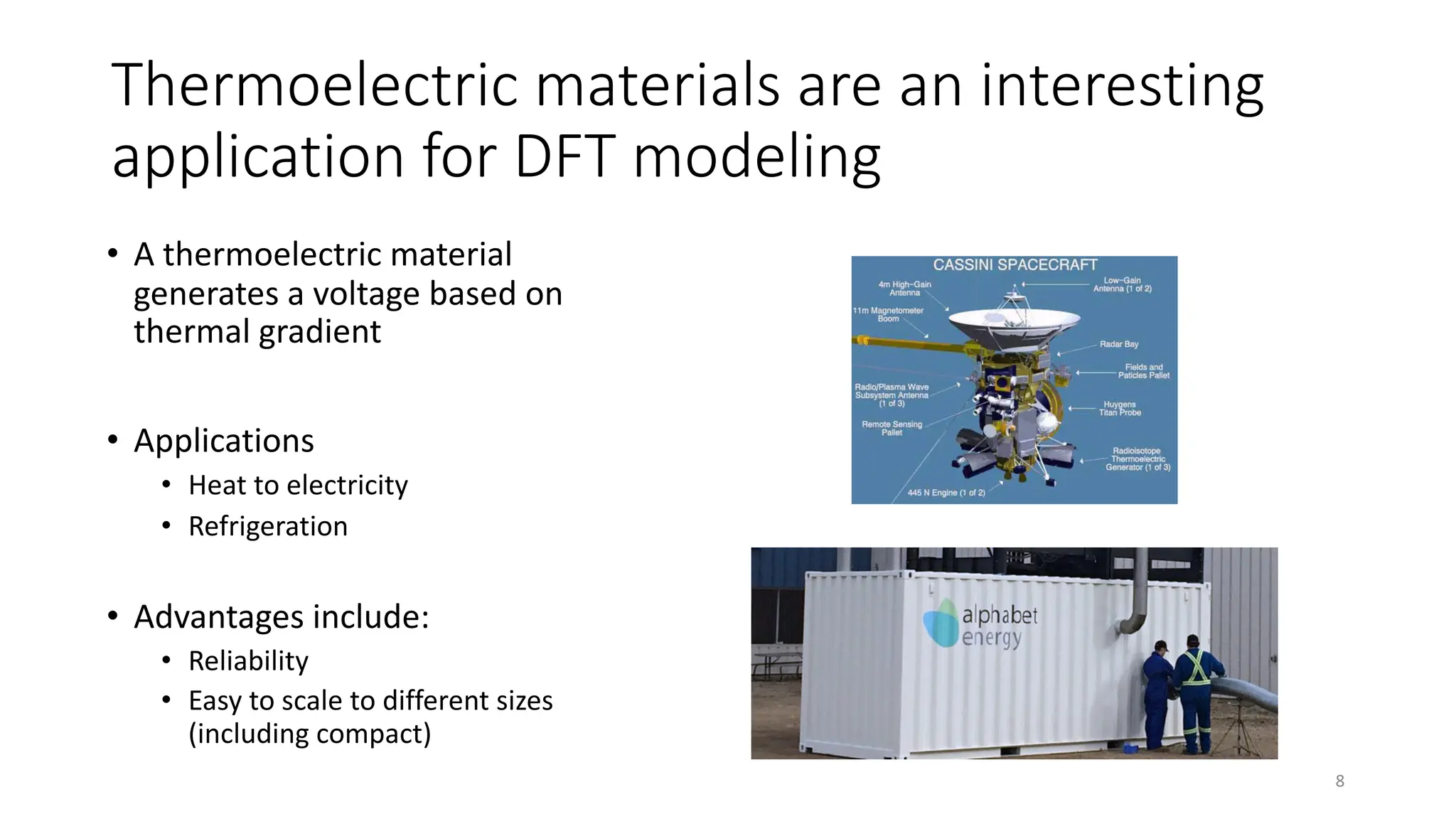
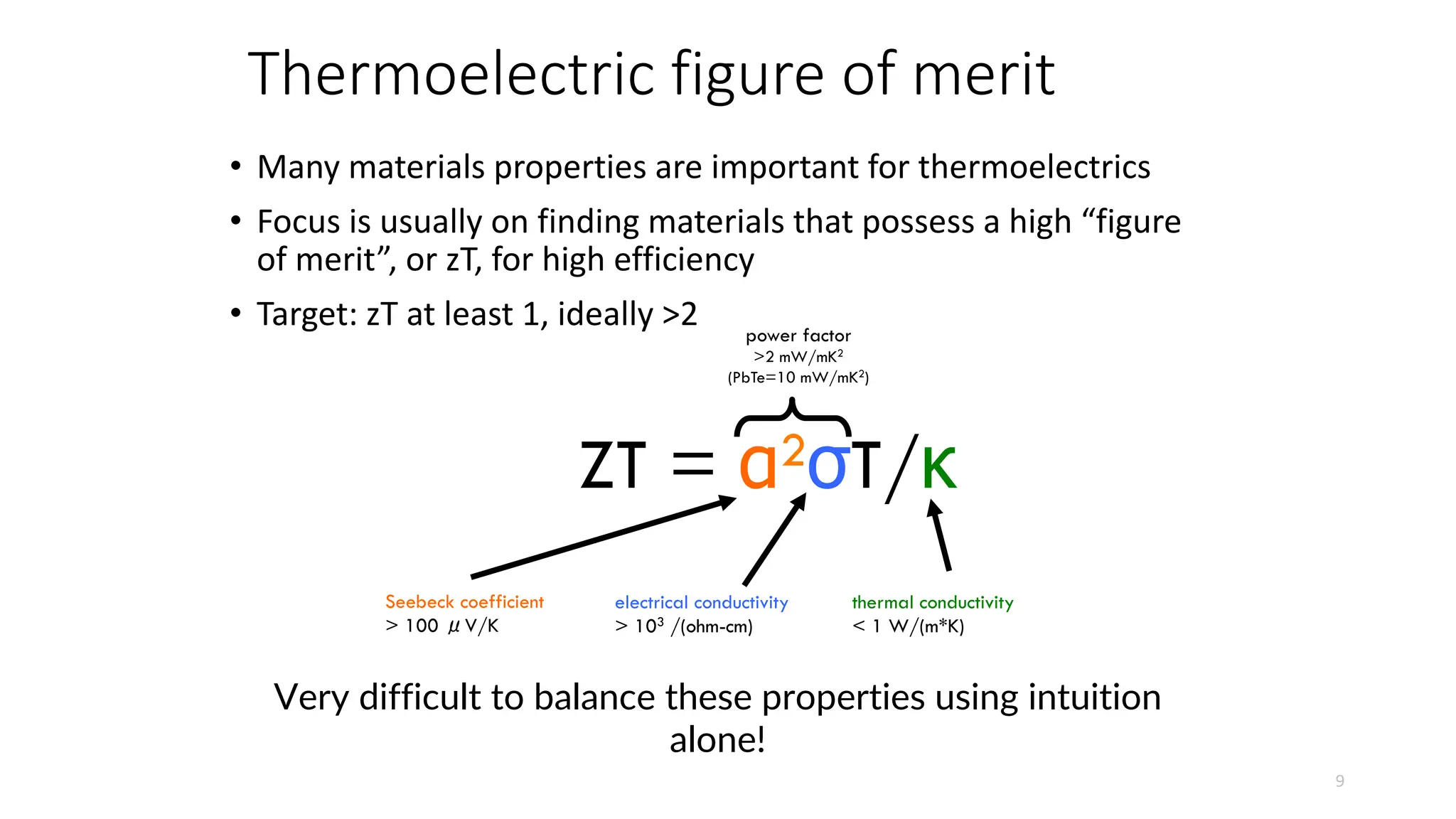
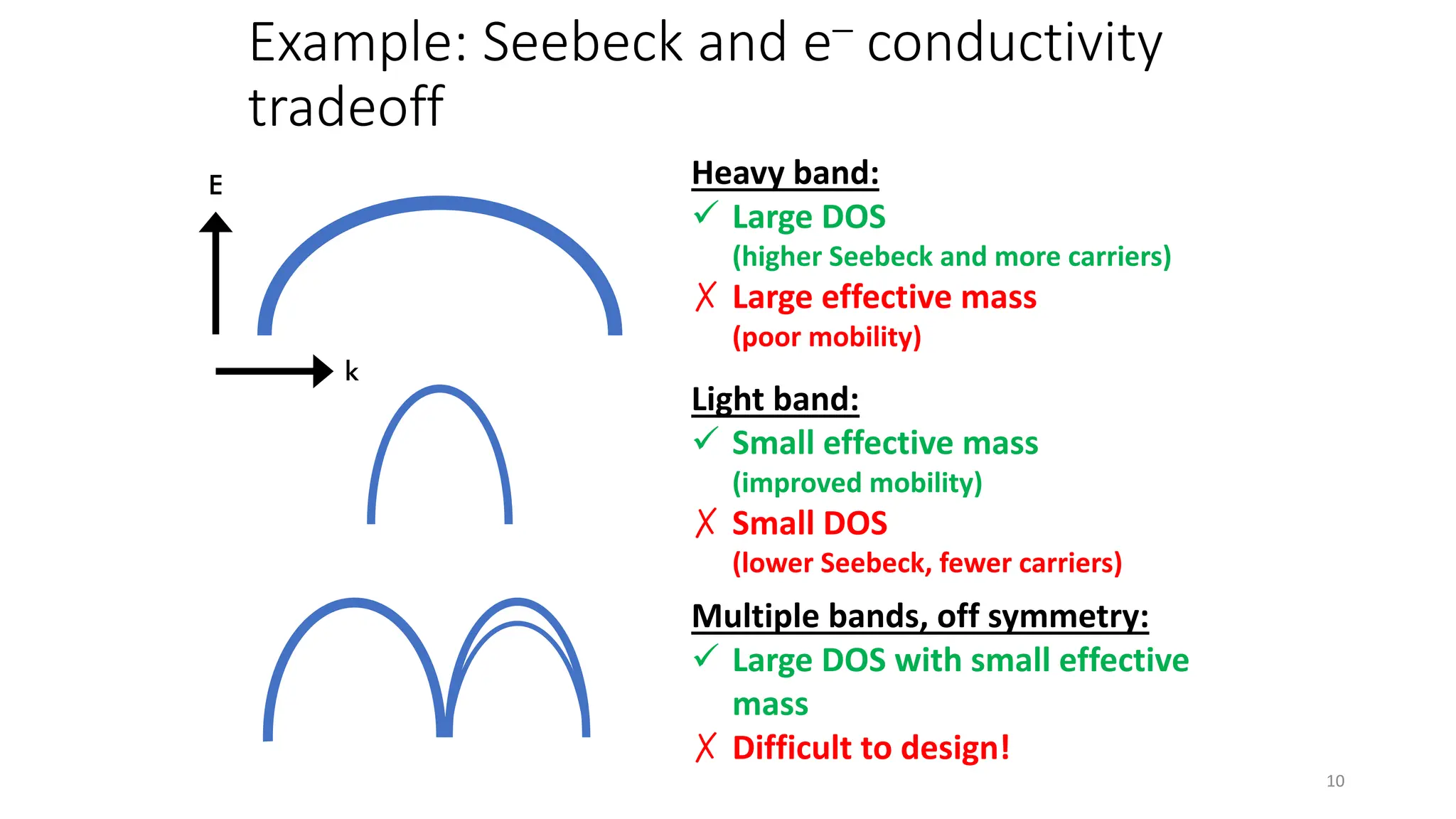

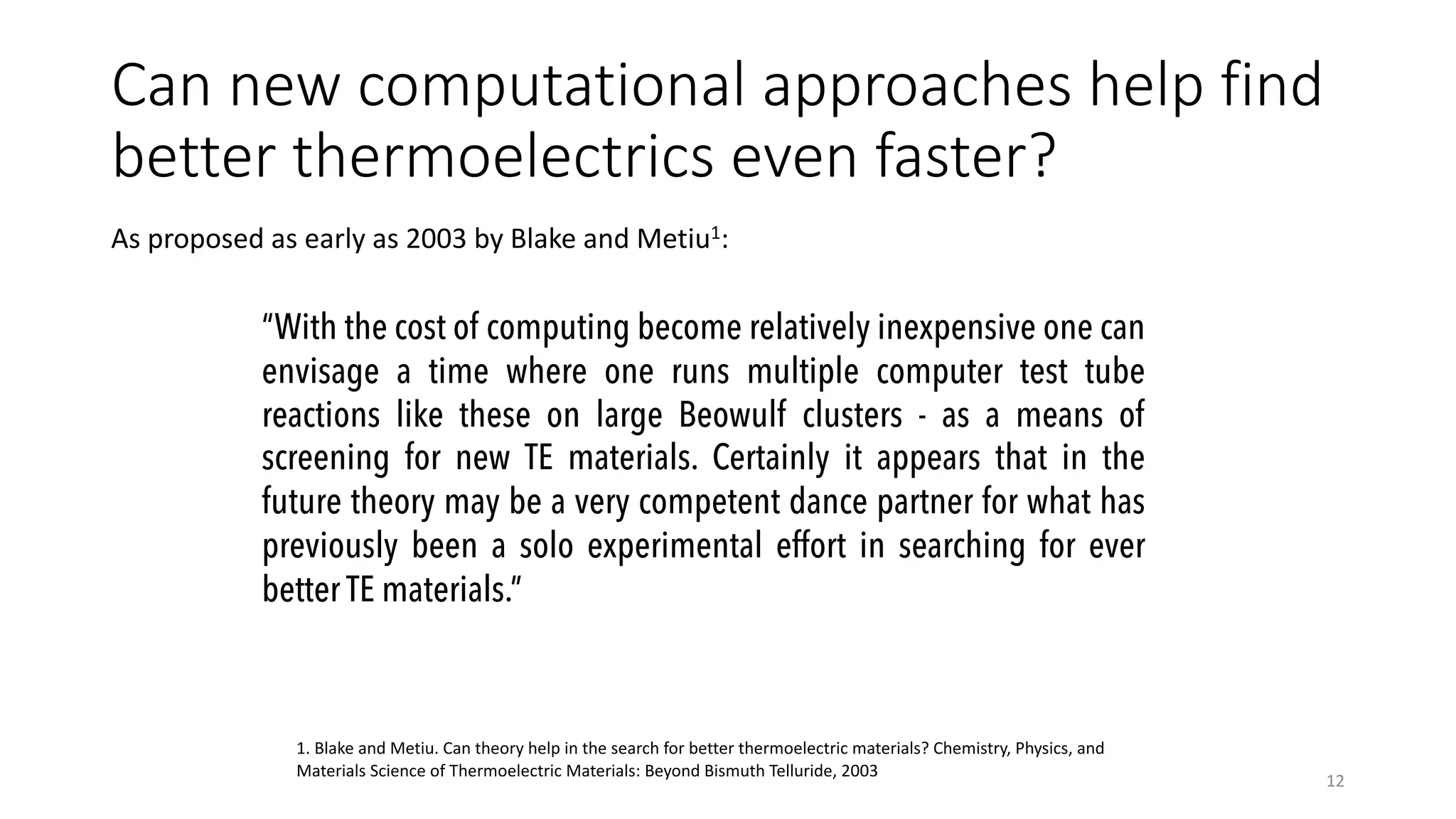
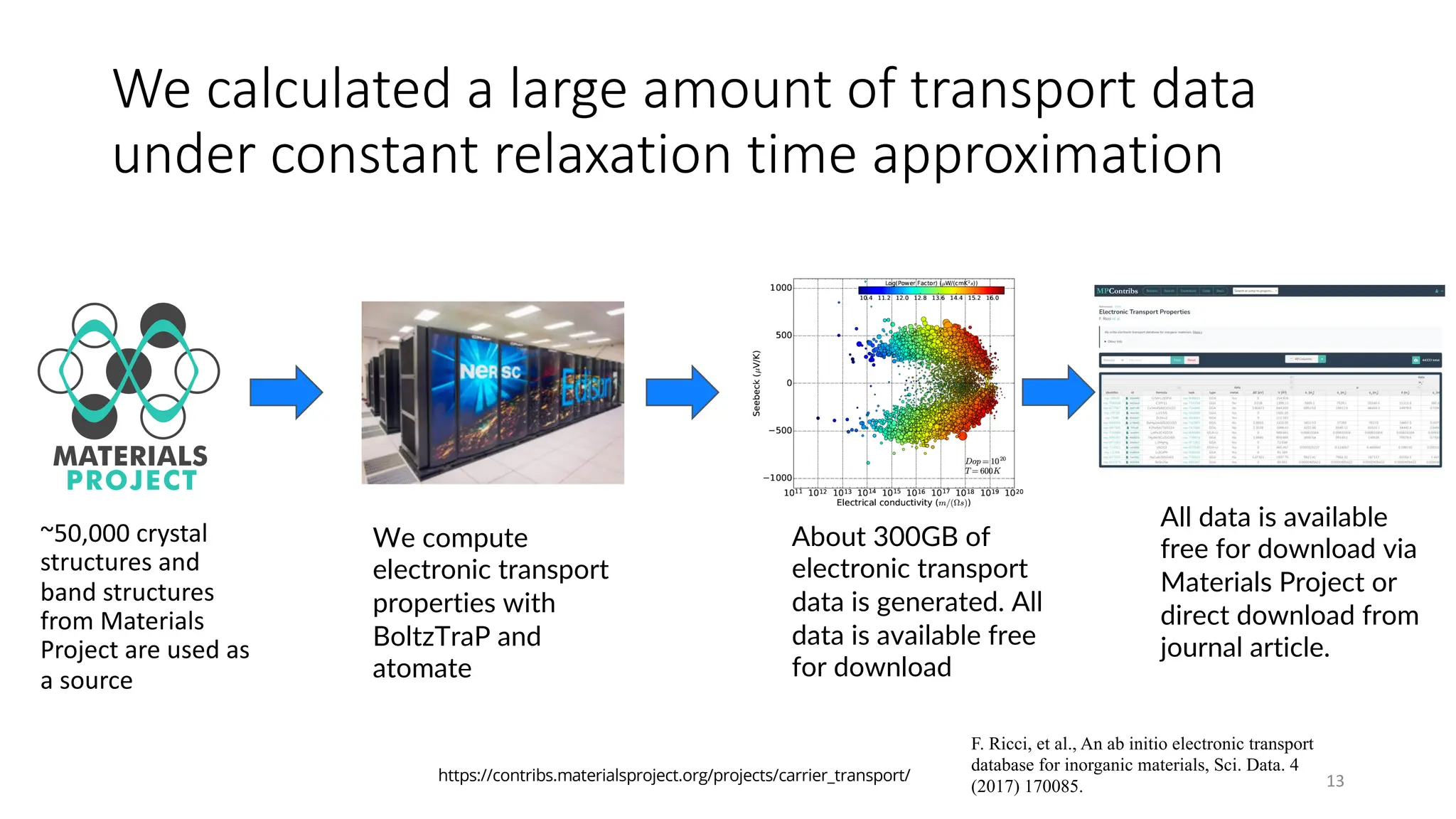
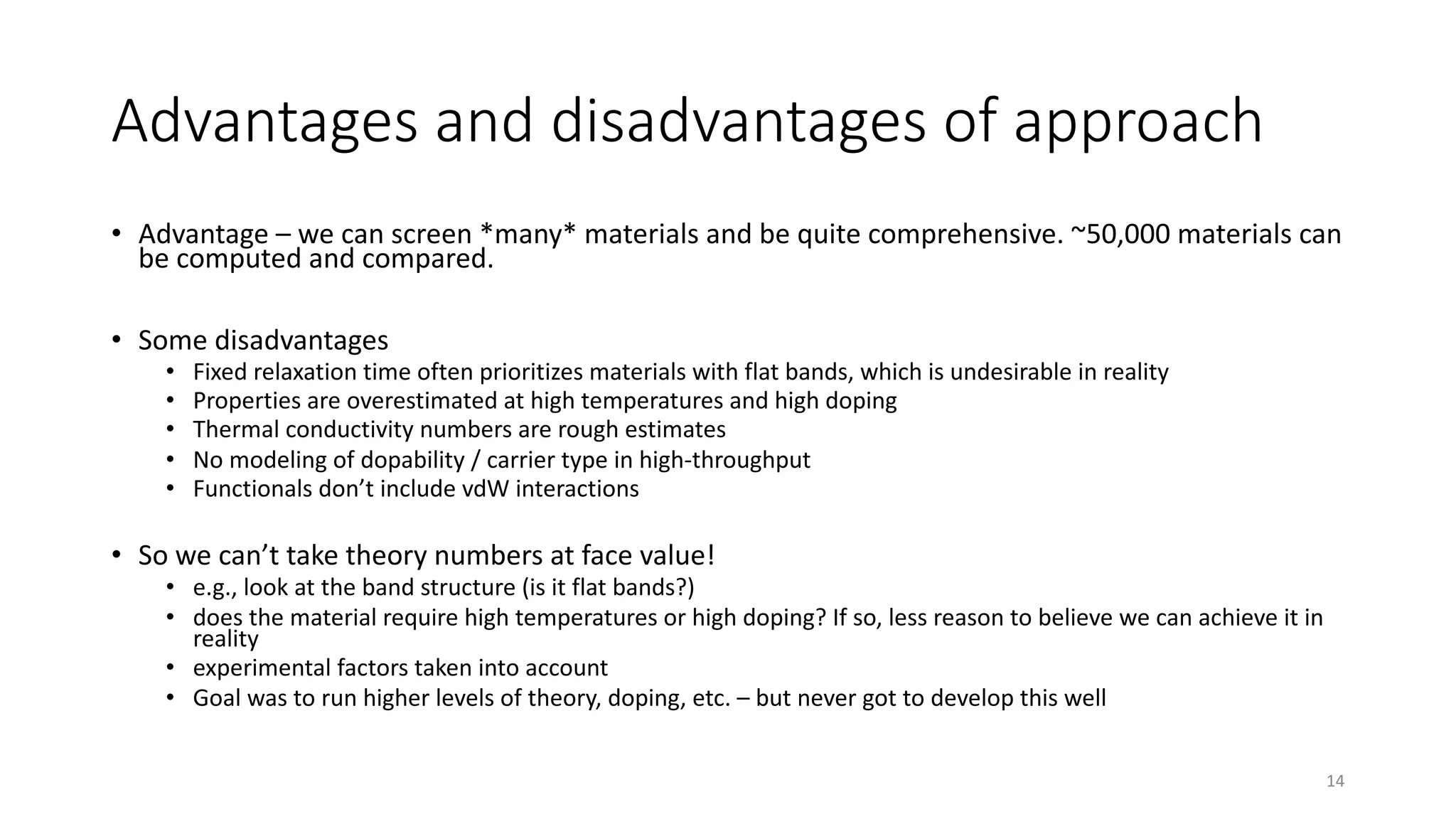
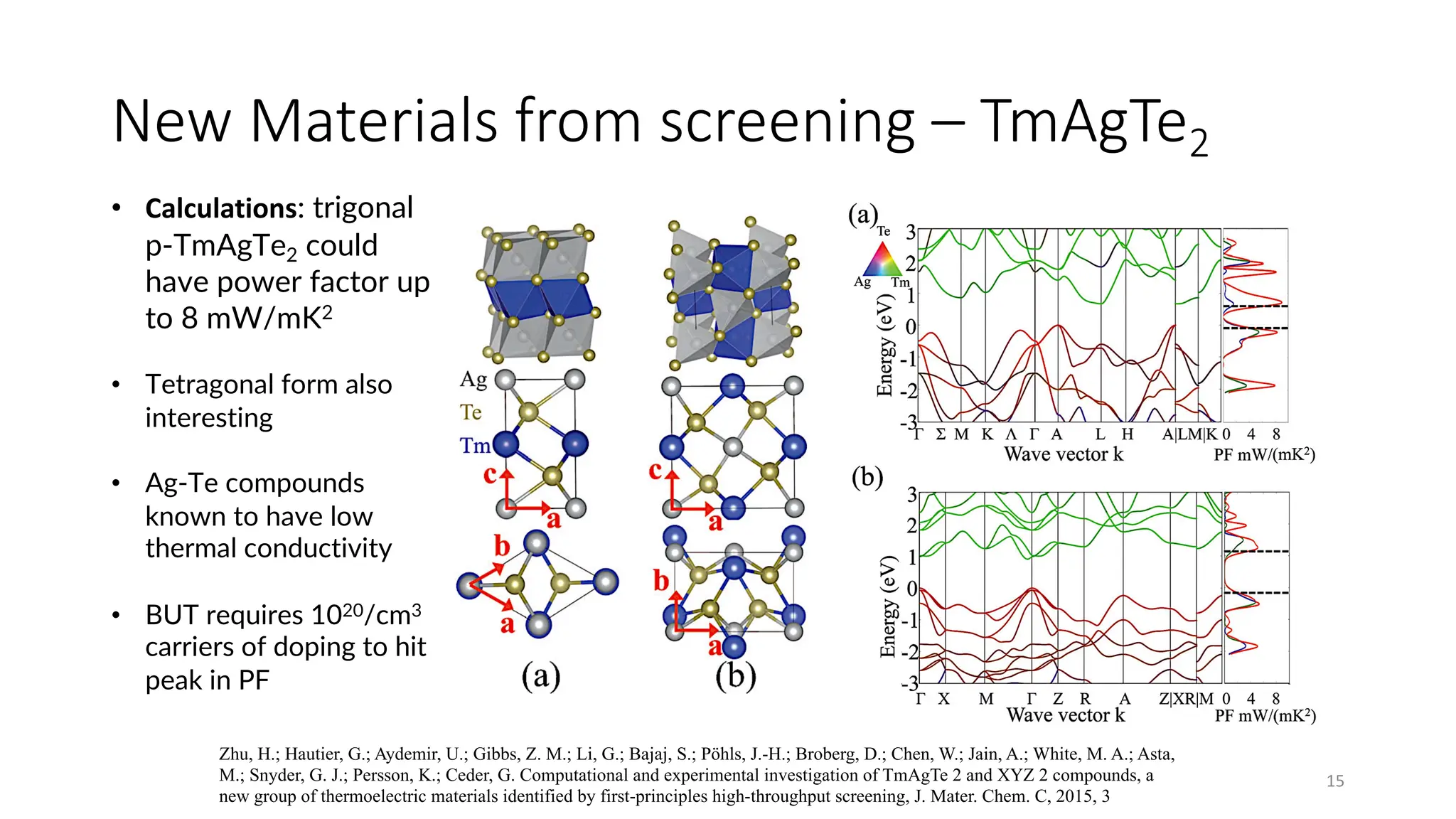
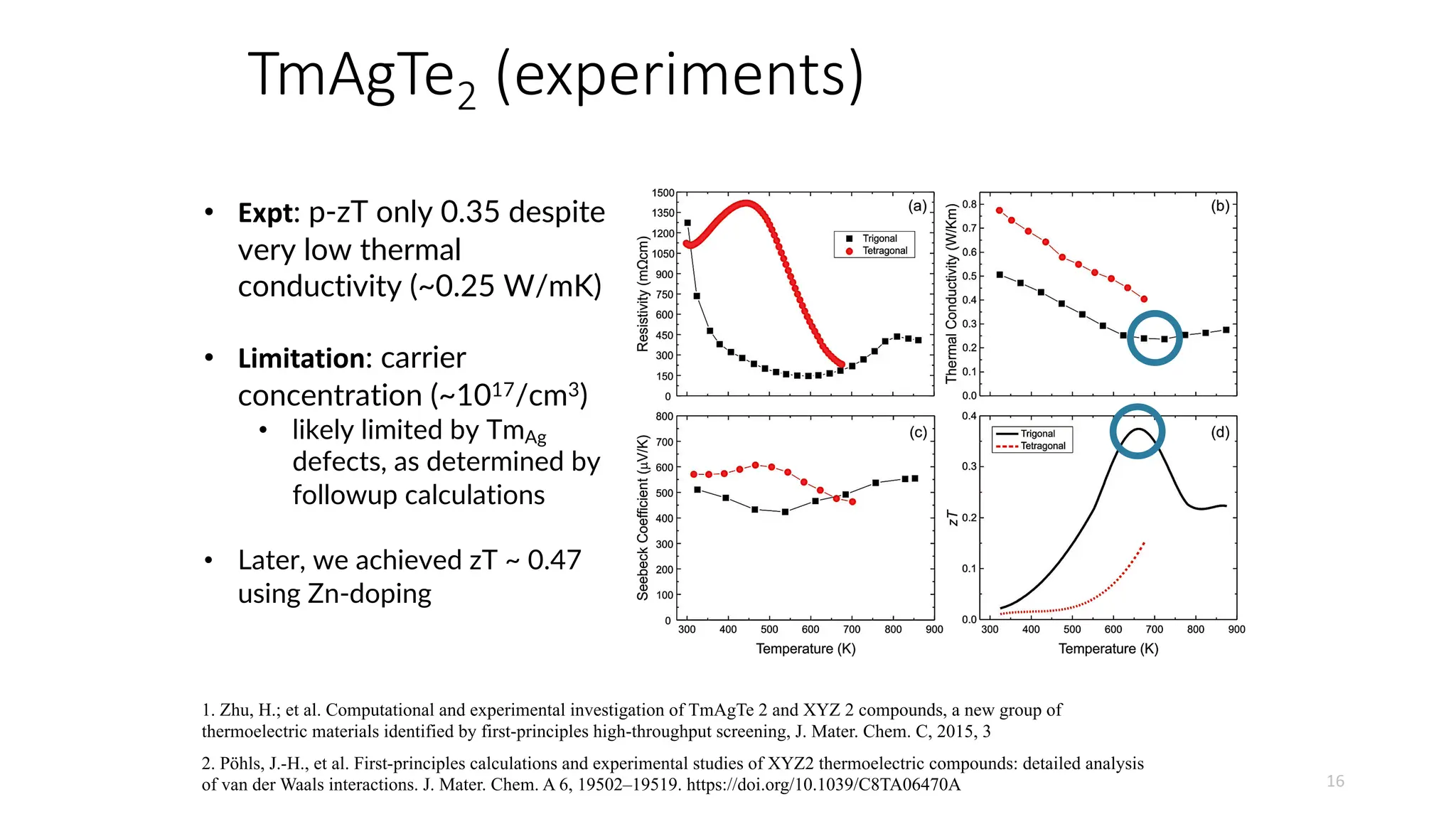
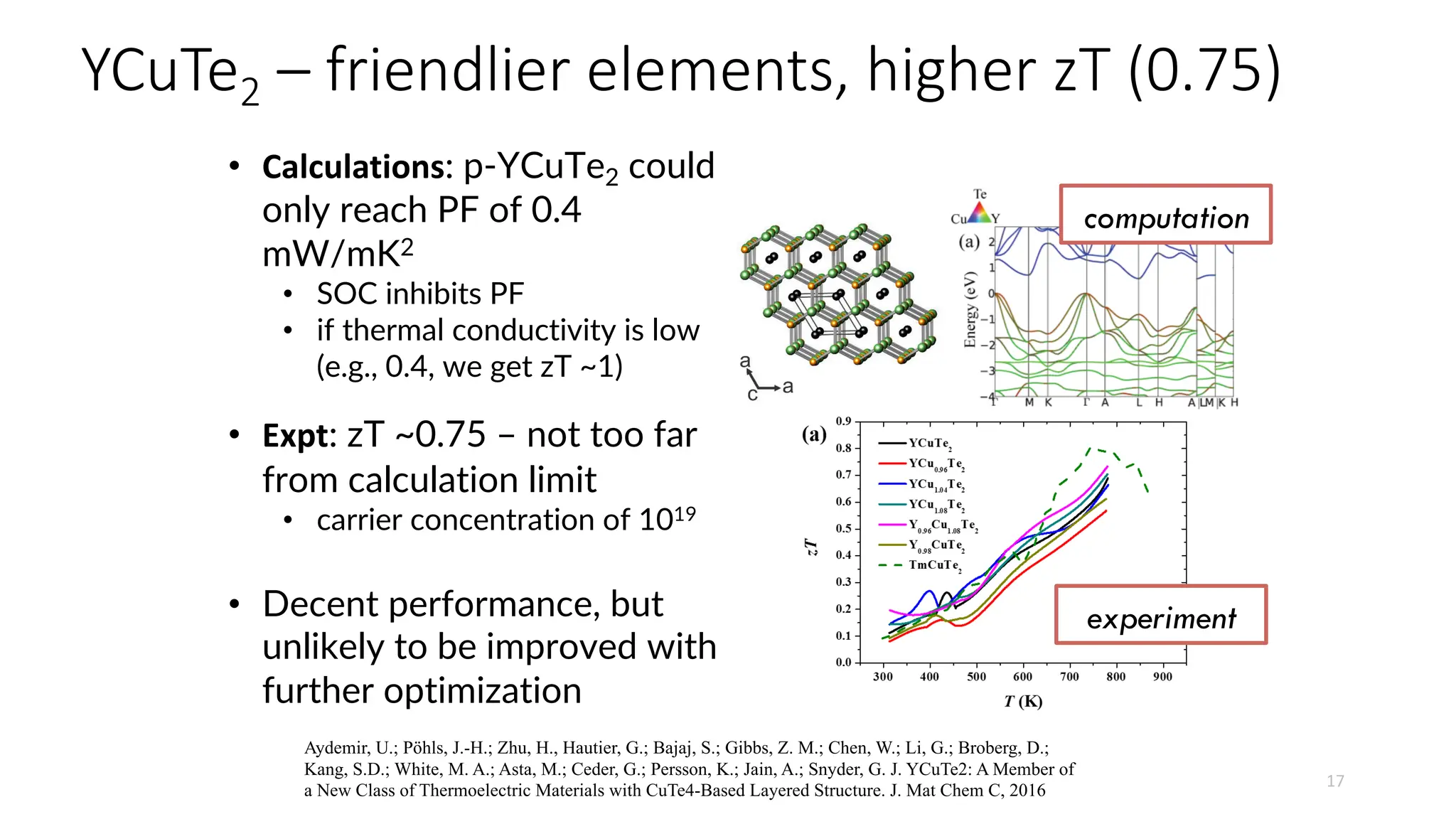
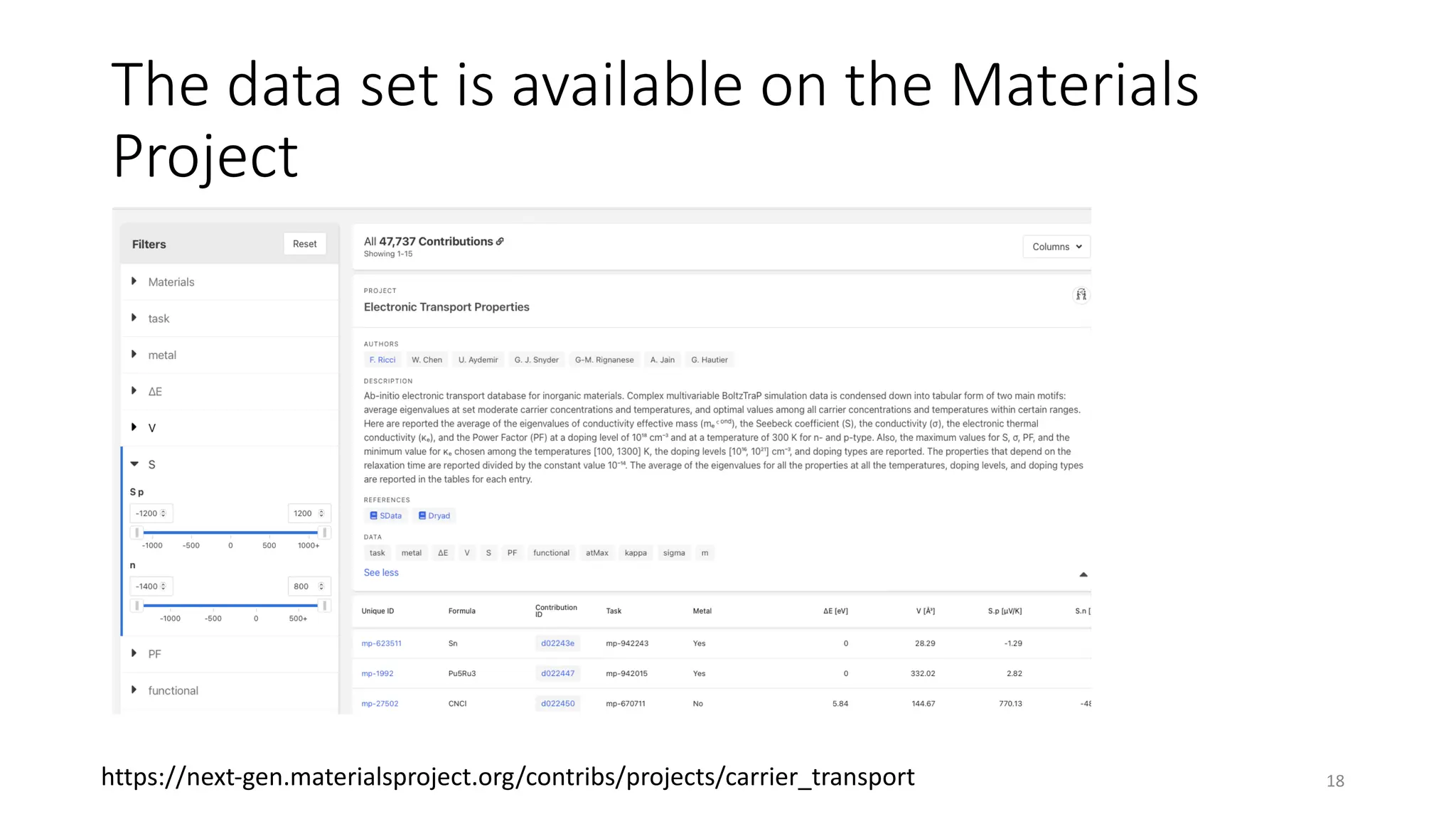

![As mentioned, screening studies for
thermoelectrics use approximate models for zT
20
Electron mobility Thermal conductivity Figure of merit
1. Constant / uniform relaxation
time approximation
2. Semi-empirical models[1]
1. Glassy limit thermal
conductivity models[2]
2. Semi-empirical models[1]
1. Combining previous
models for electron and
thermal conductivity
(optimize for doping, T)
2. Descriptors that implicitly
optimize[1] for doping, T
!=constant
[1] Yan, J.; Gorai, P.; Ortiz, B.; Miller, S.; Barnett, S. A.; Mason, T.; Stevanović, V.; Toberer, E. S. Material
Descriptors for Predicting Thermoelectric Performance. Energy Environ. Sci. 2015, 8 (3), 983–994
[2] D. G. Cahill, S. K. Watson, R. O. Pohl, Phys. Rev. B 1992, 46, 6133-6140 ; D. G. Cahill, R. O. Pohl, Ann. Rev.
Phys. Chem. 1988, 39, 93-121.
3 fitted parameters (A0, B, s)
Band effective mass based on
DOS effective mass and valley
degeneracy
2 fitted parameters (A1, A2)
Later extended to include
coordination number effects](https://image.slidesharecdn.com/jainucd-240209180833-bcb021af/75/Discovering-advanced-materials-for-energy-applications-theory-high-throughput-calculations-and-automated-experiments-20-2048.jpg)
